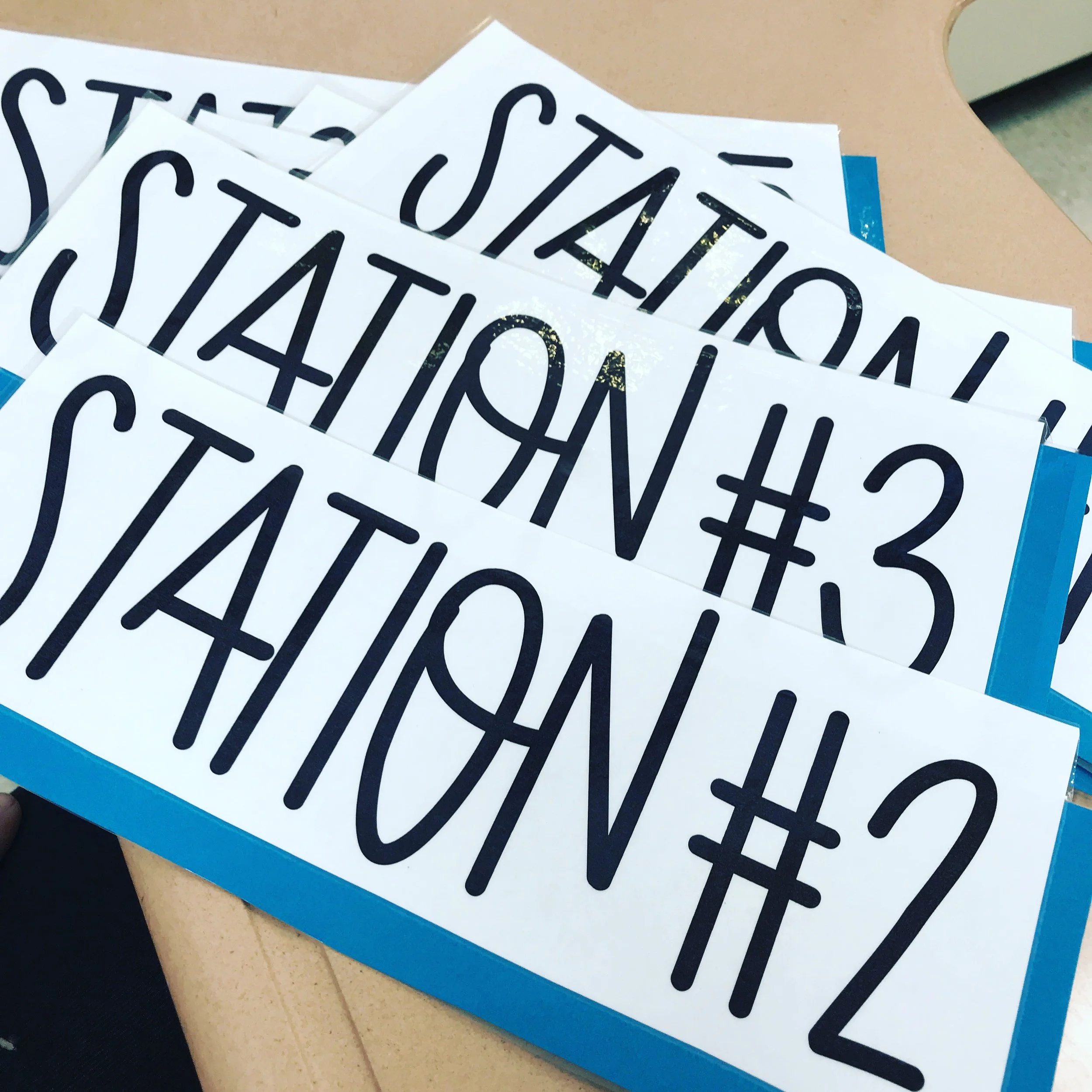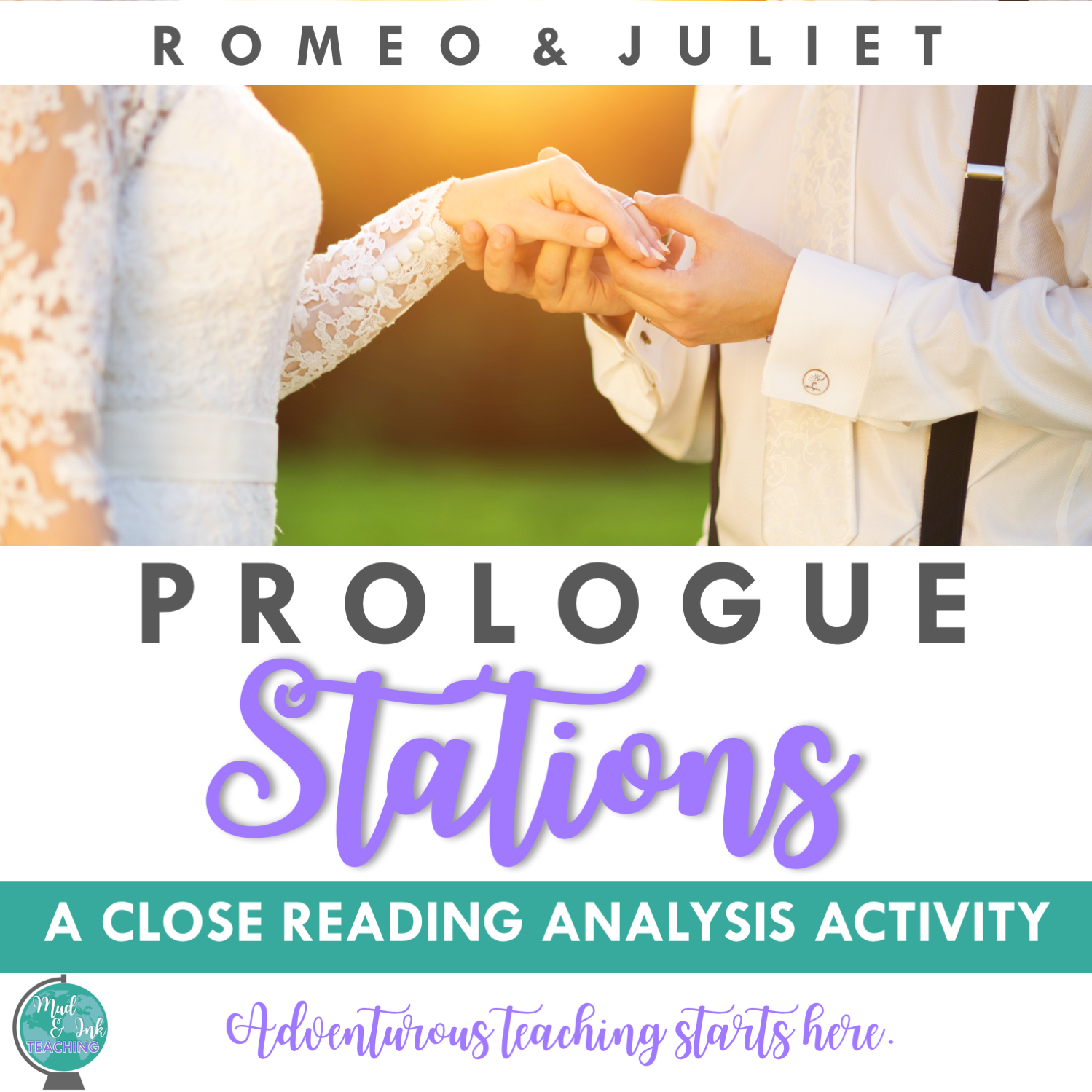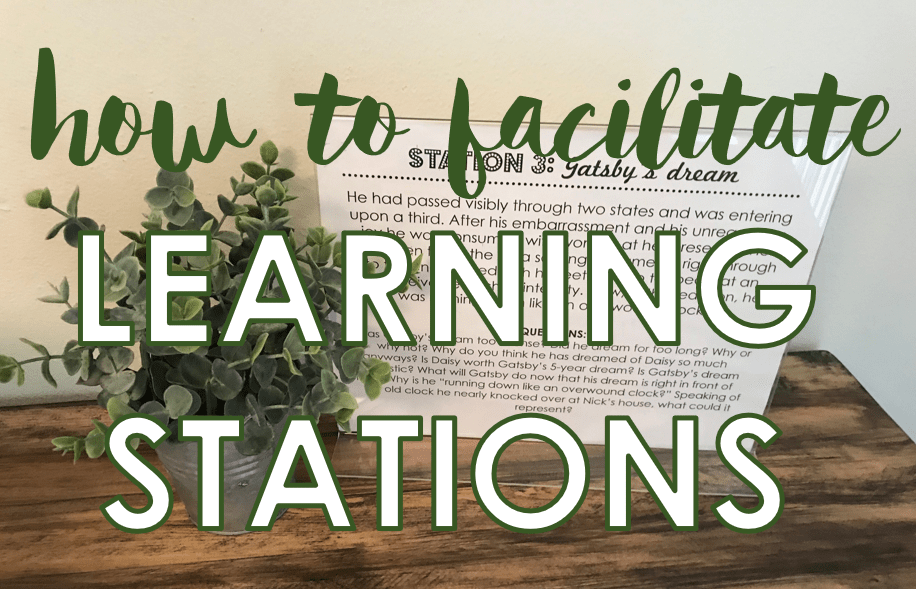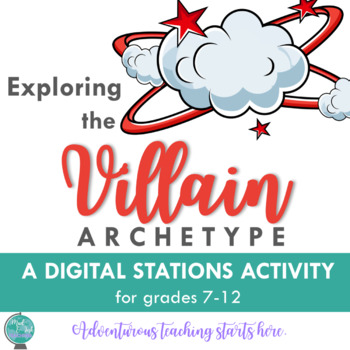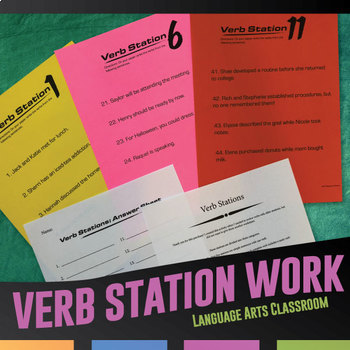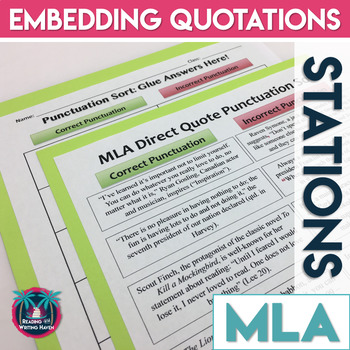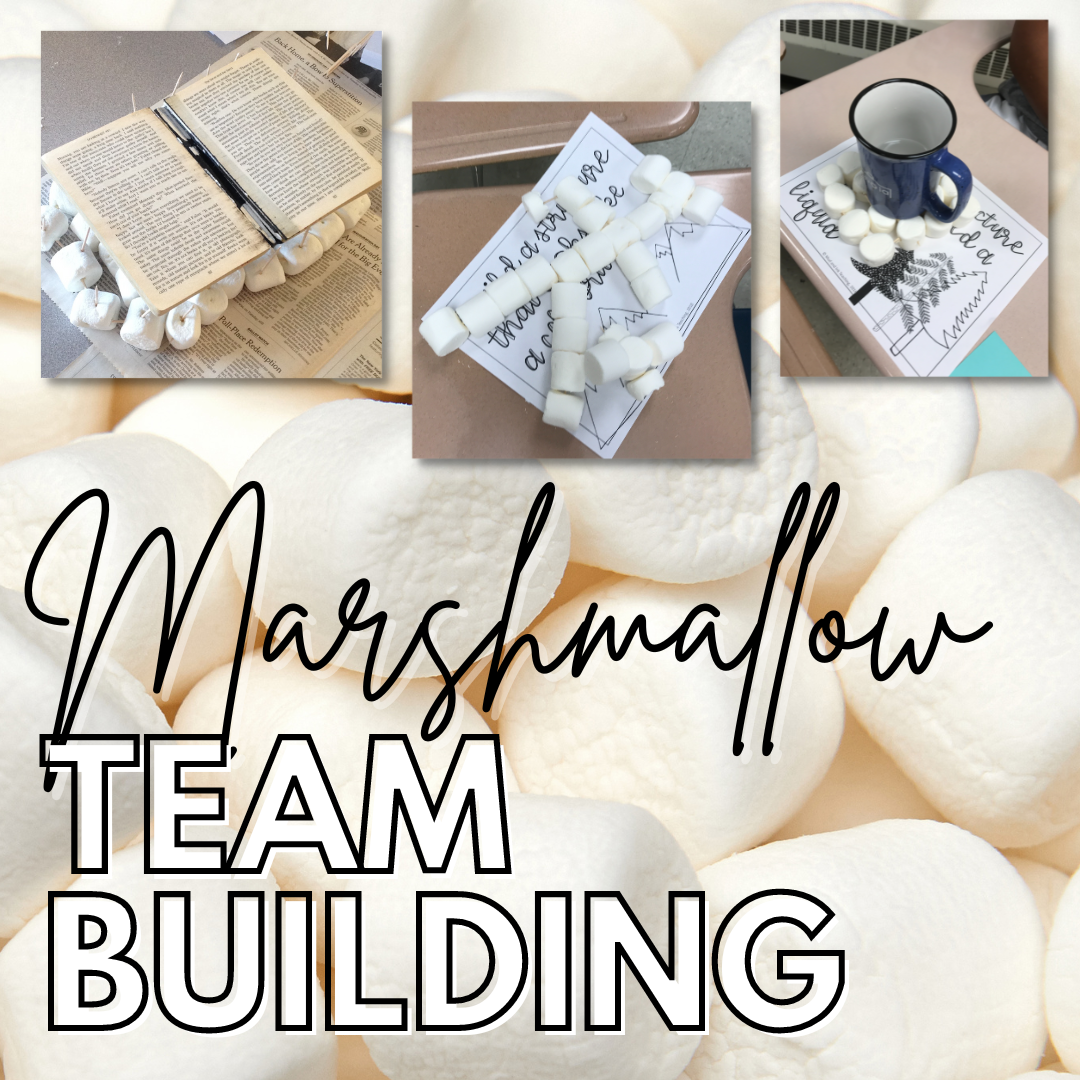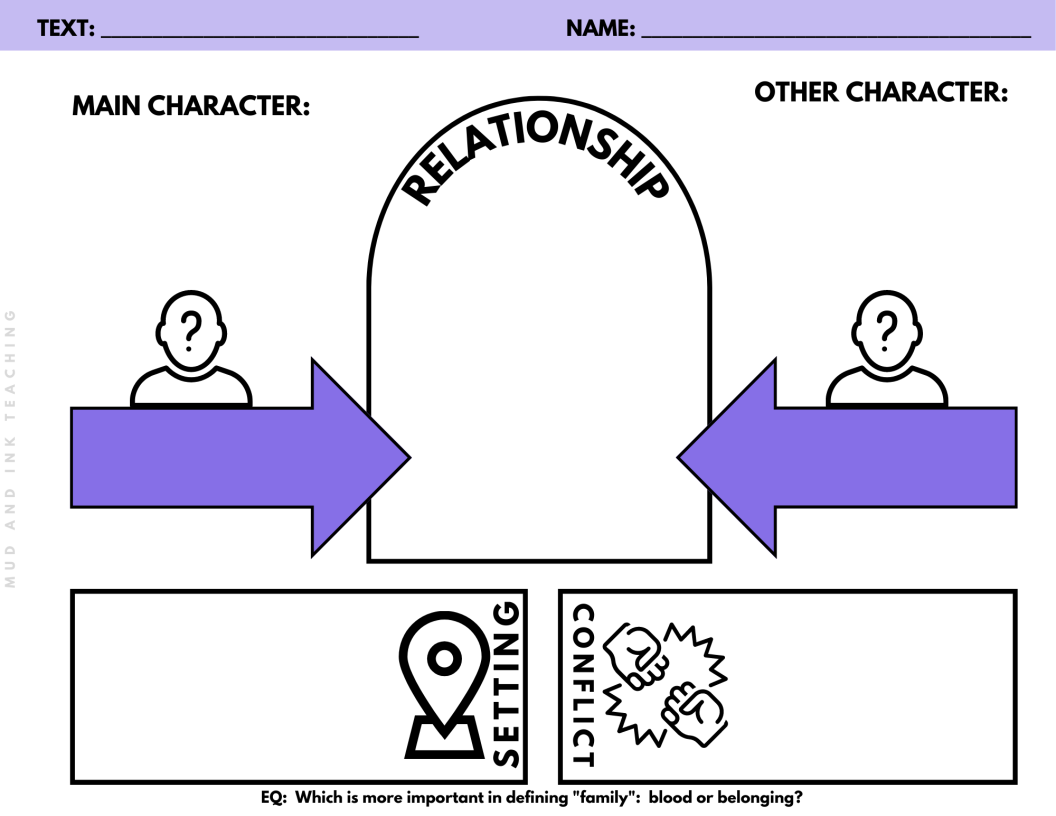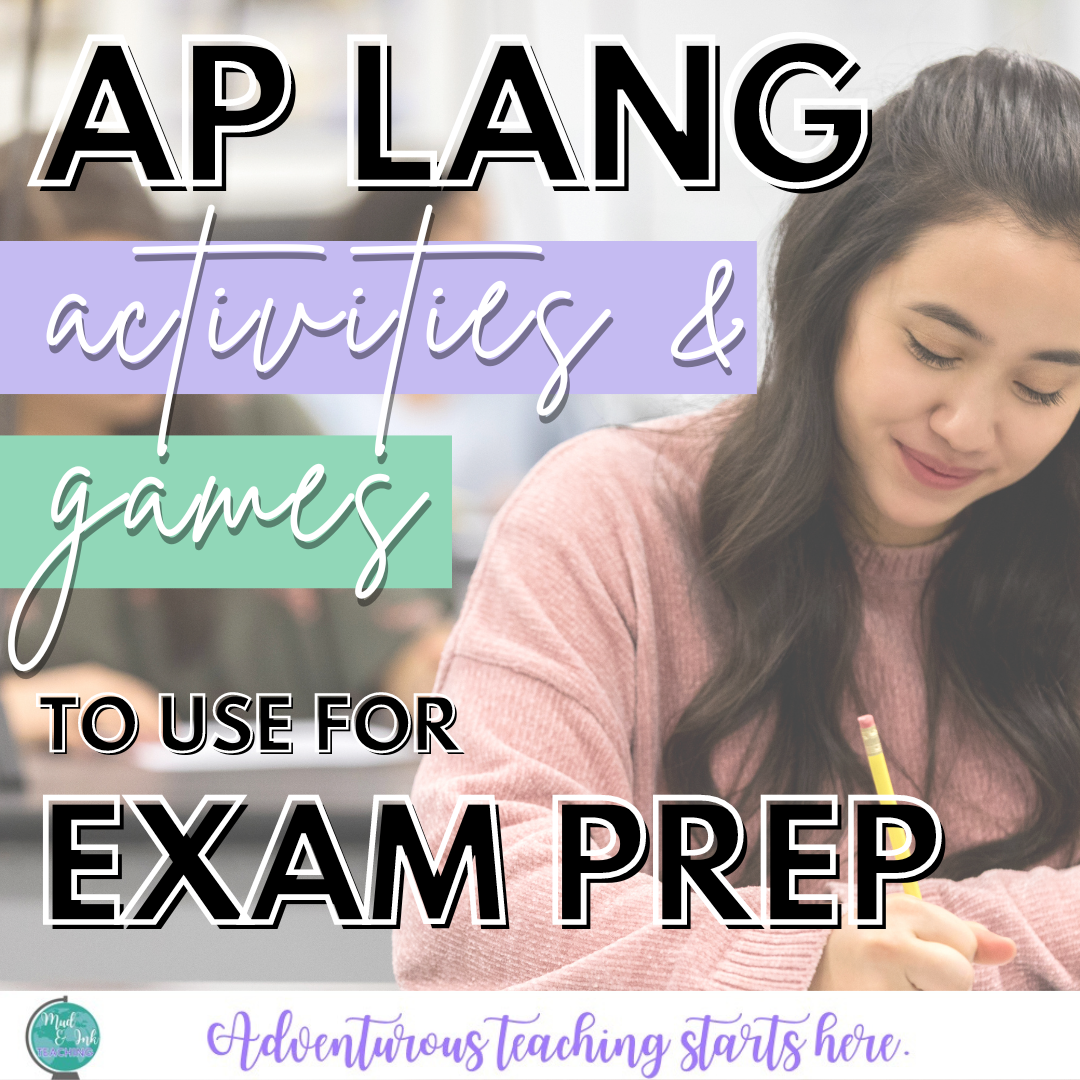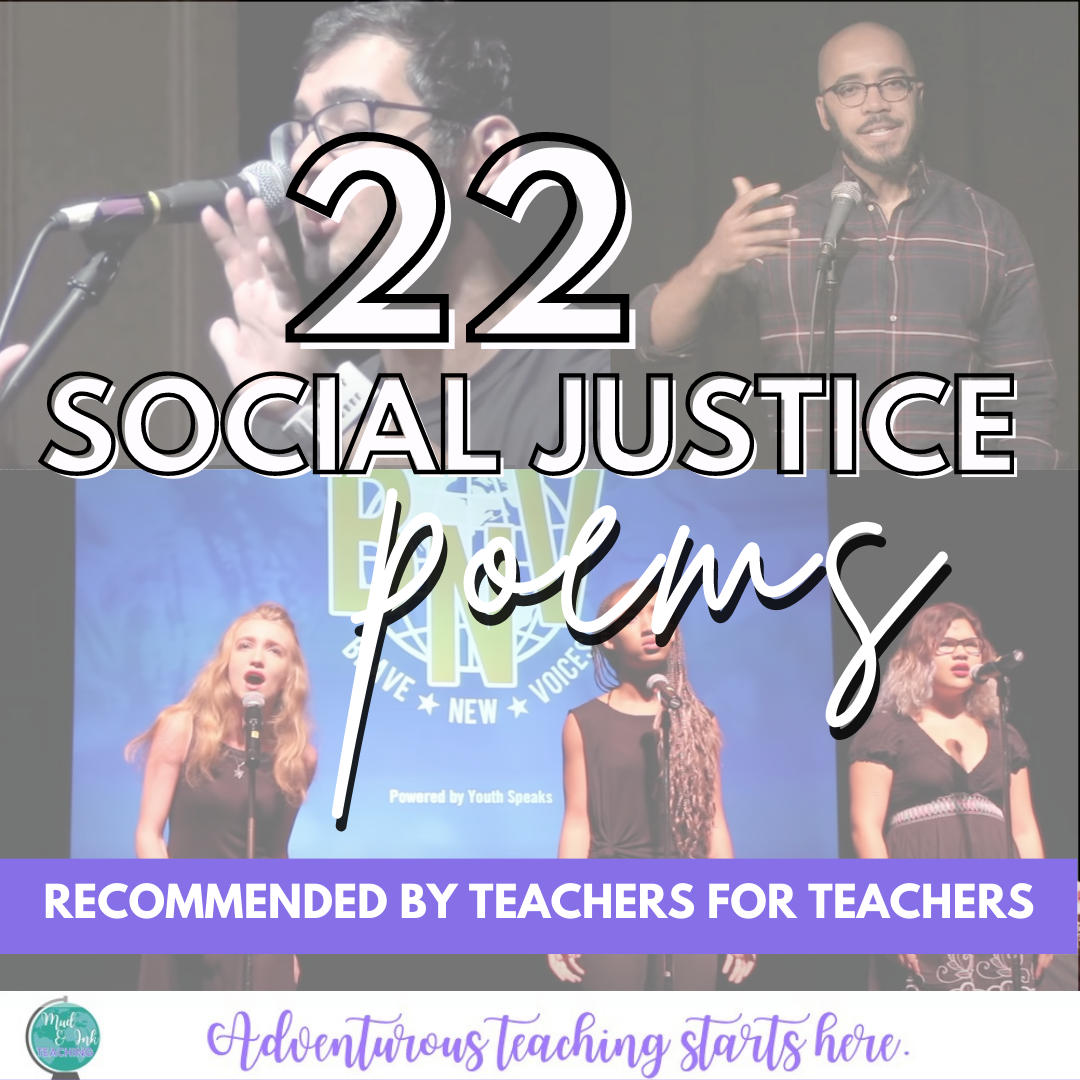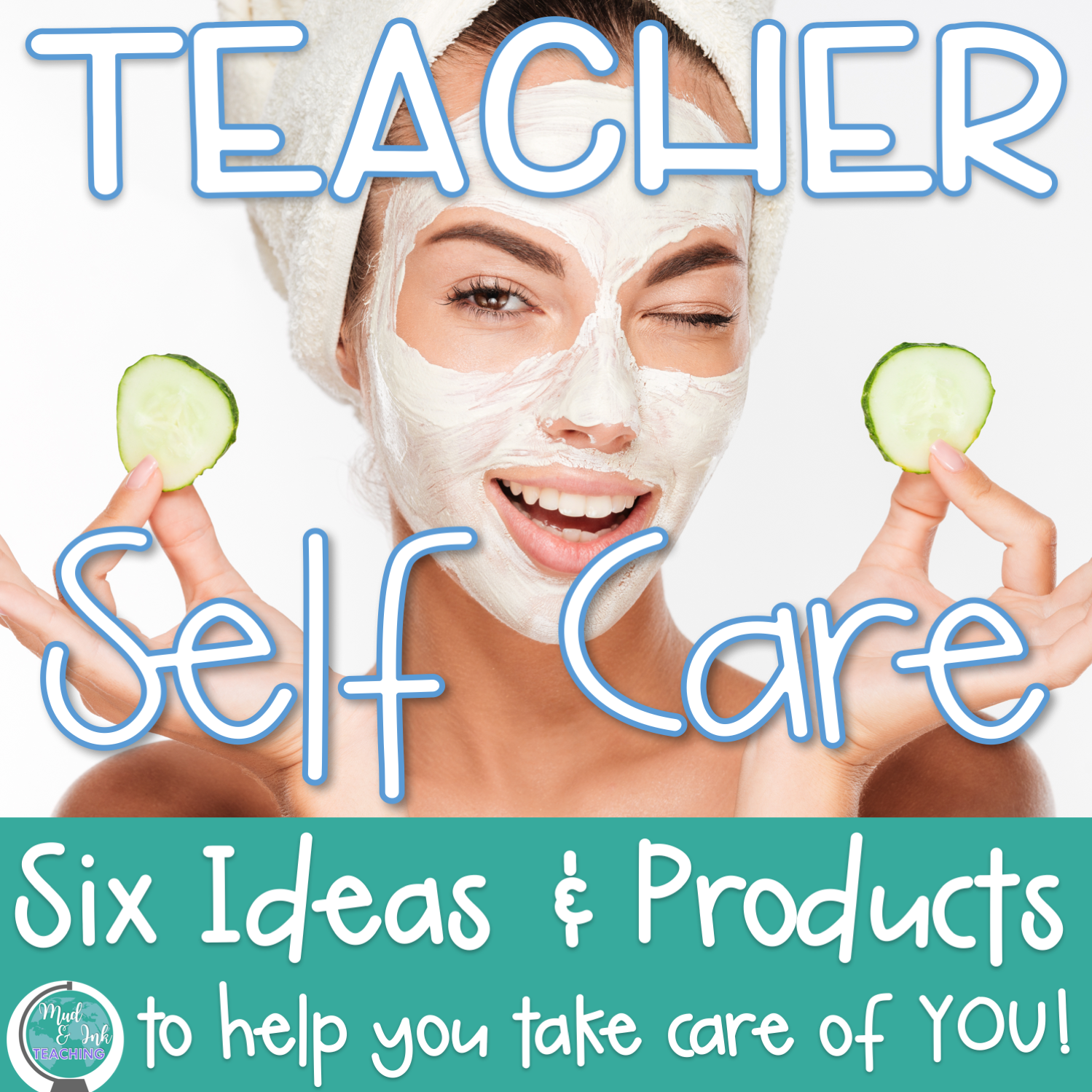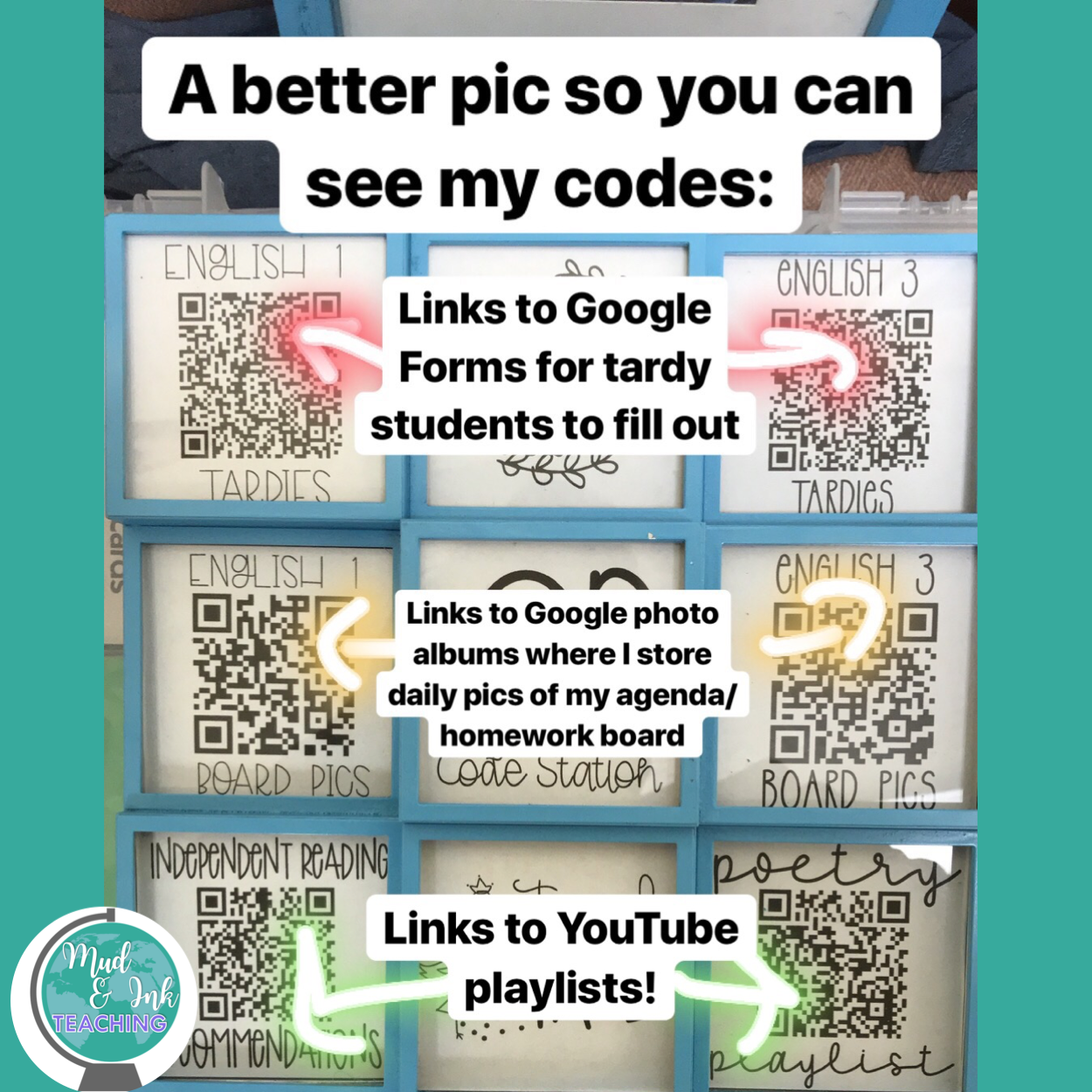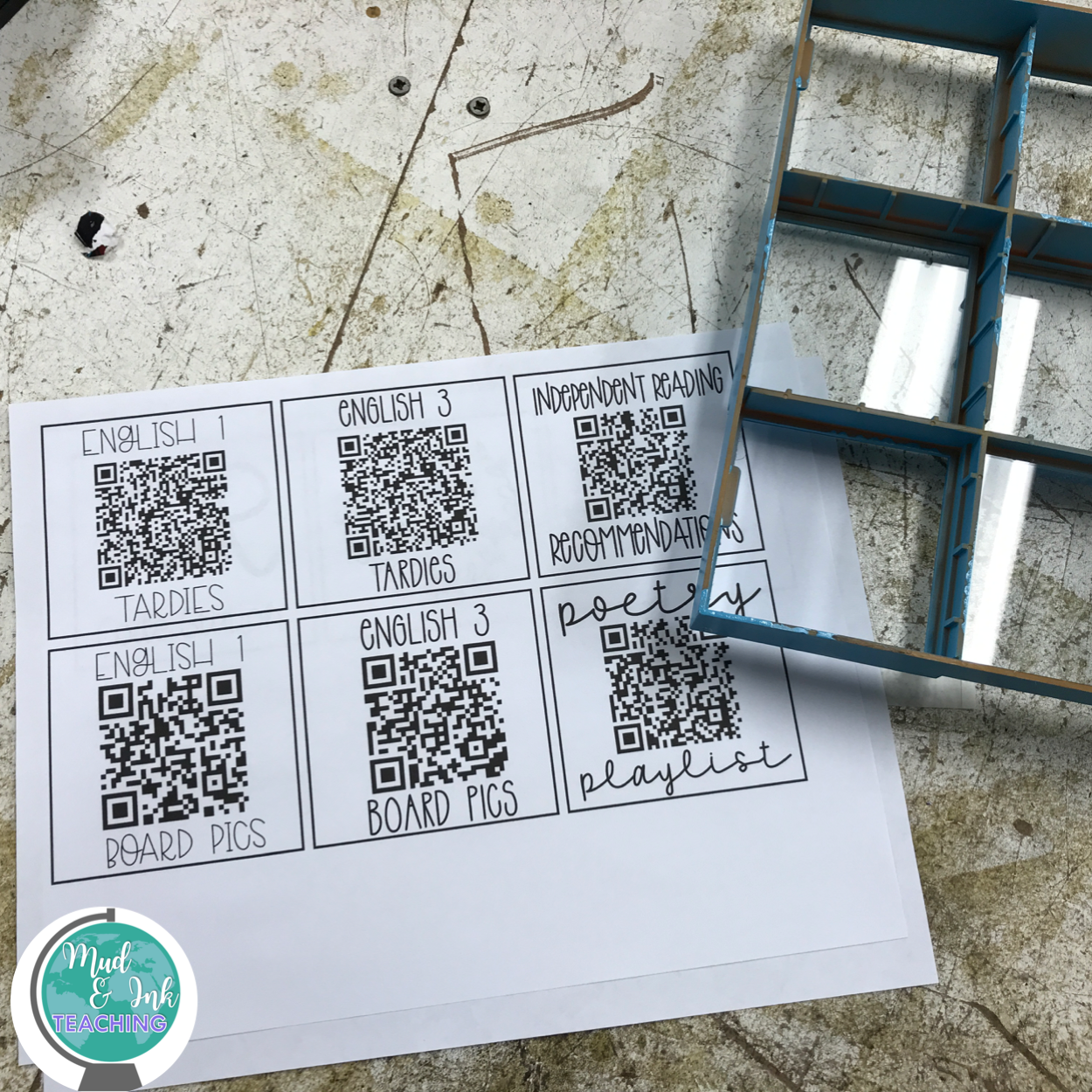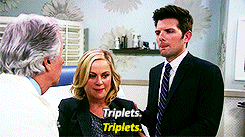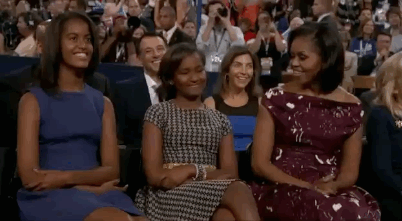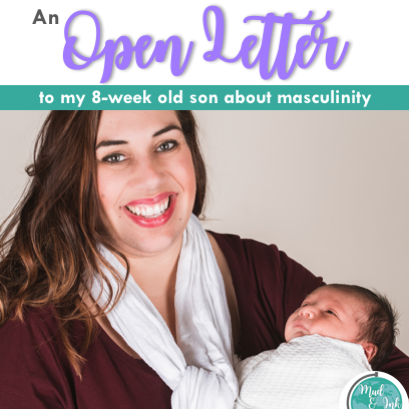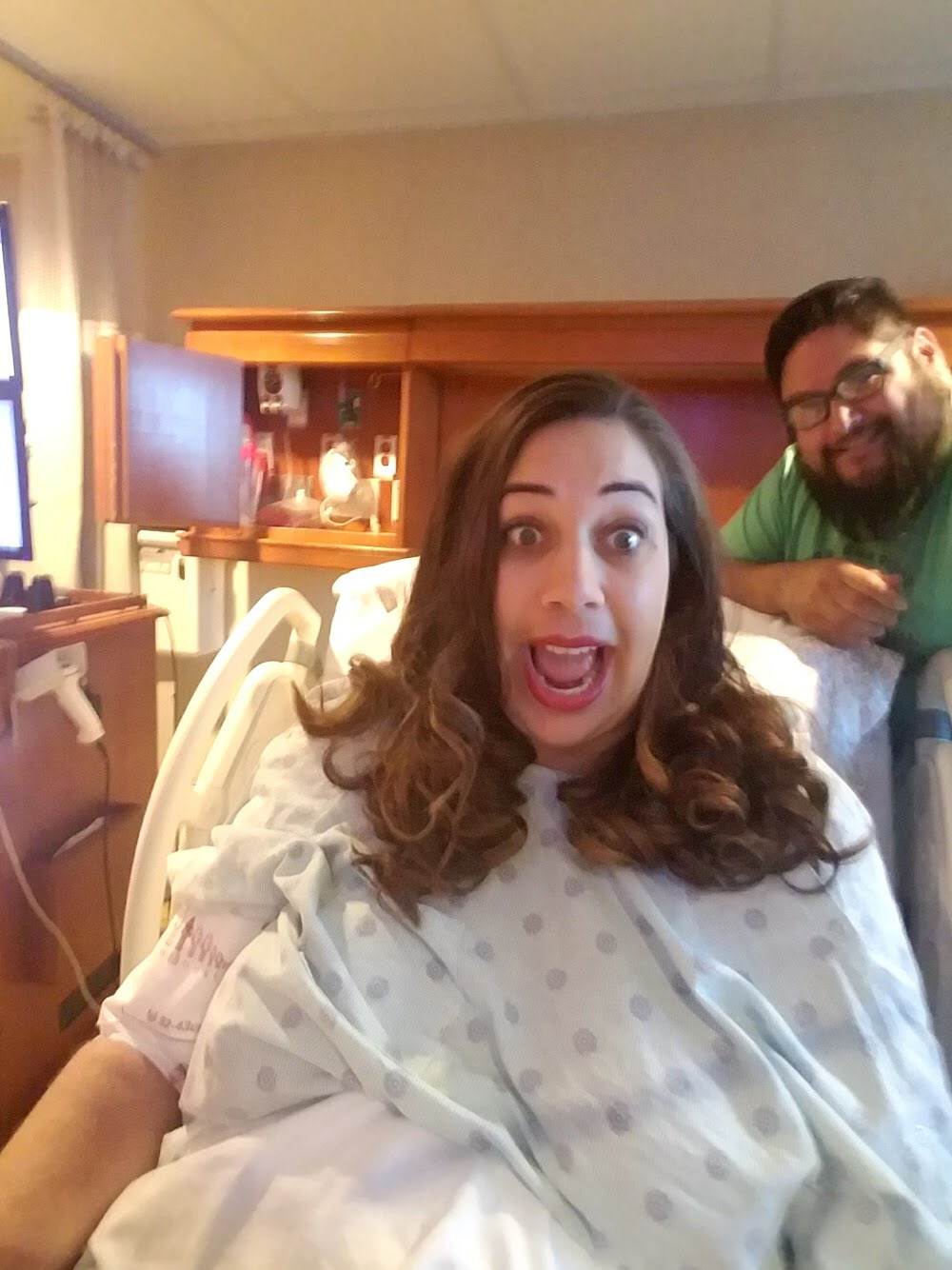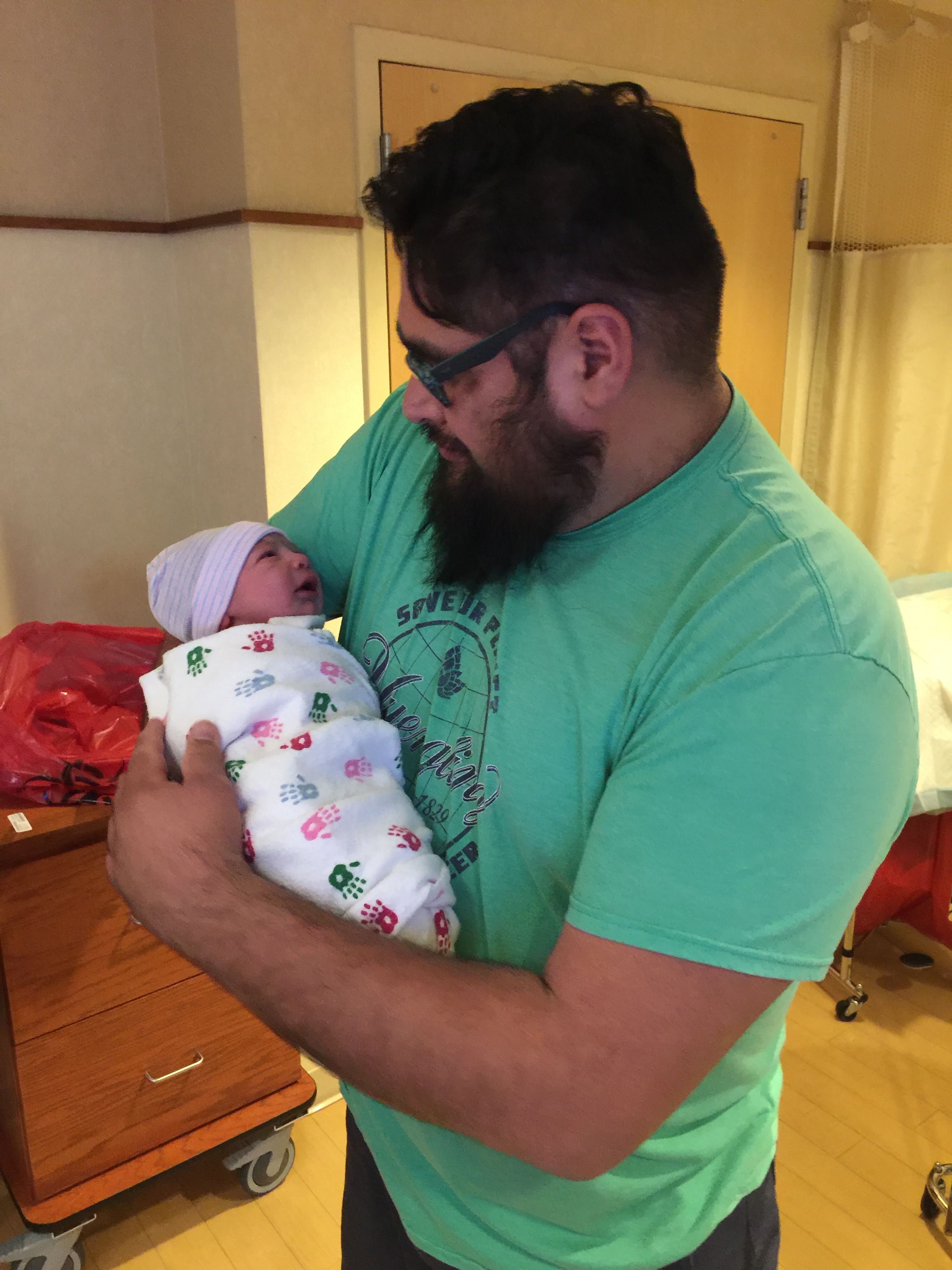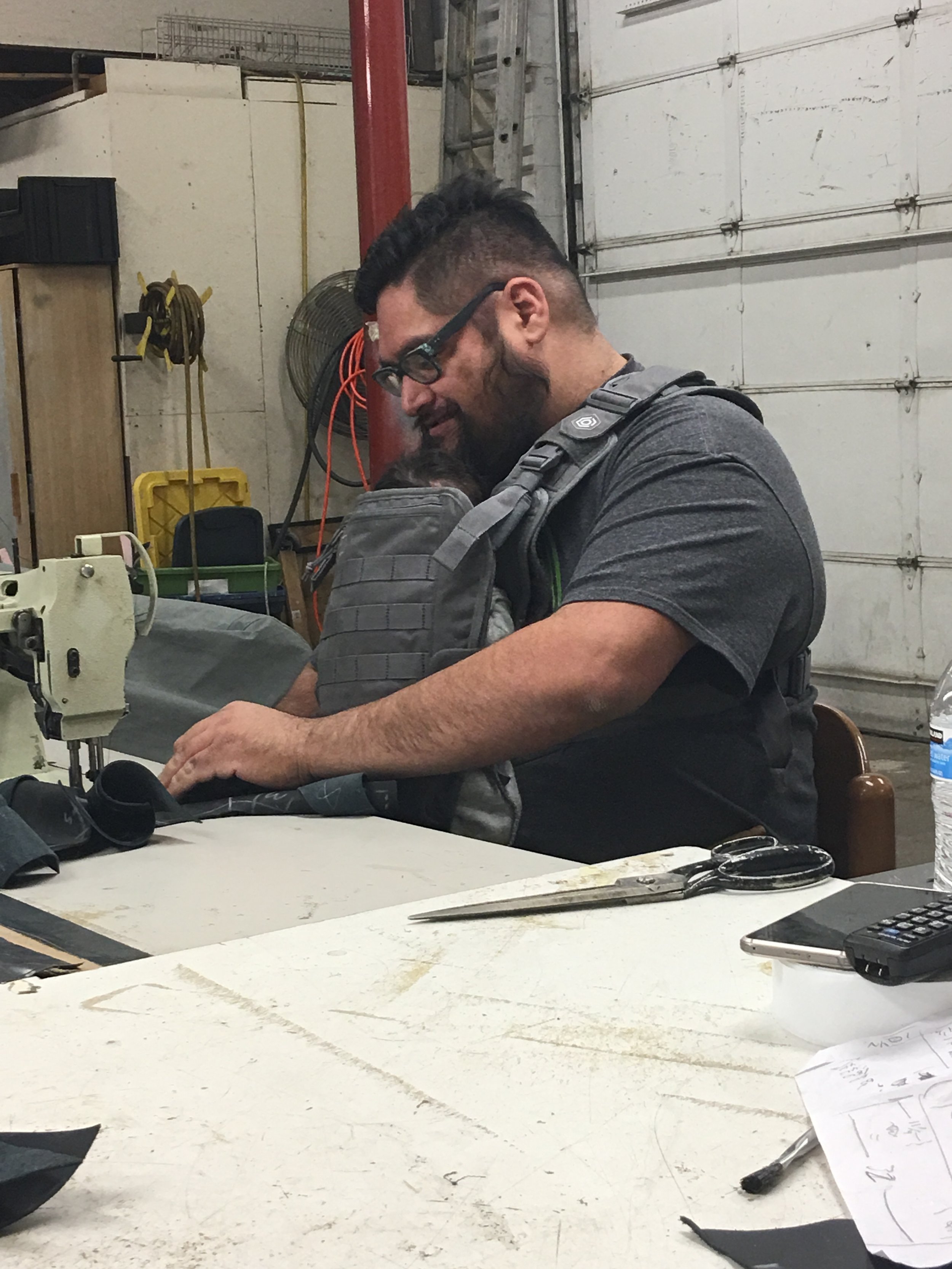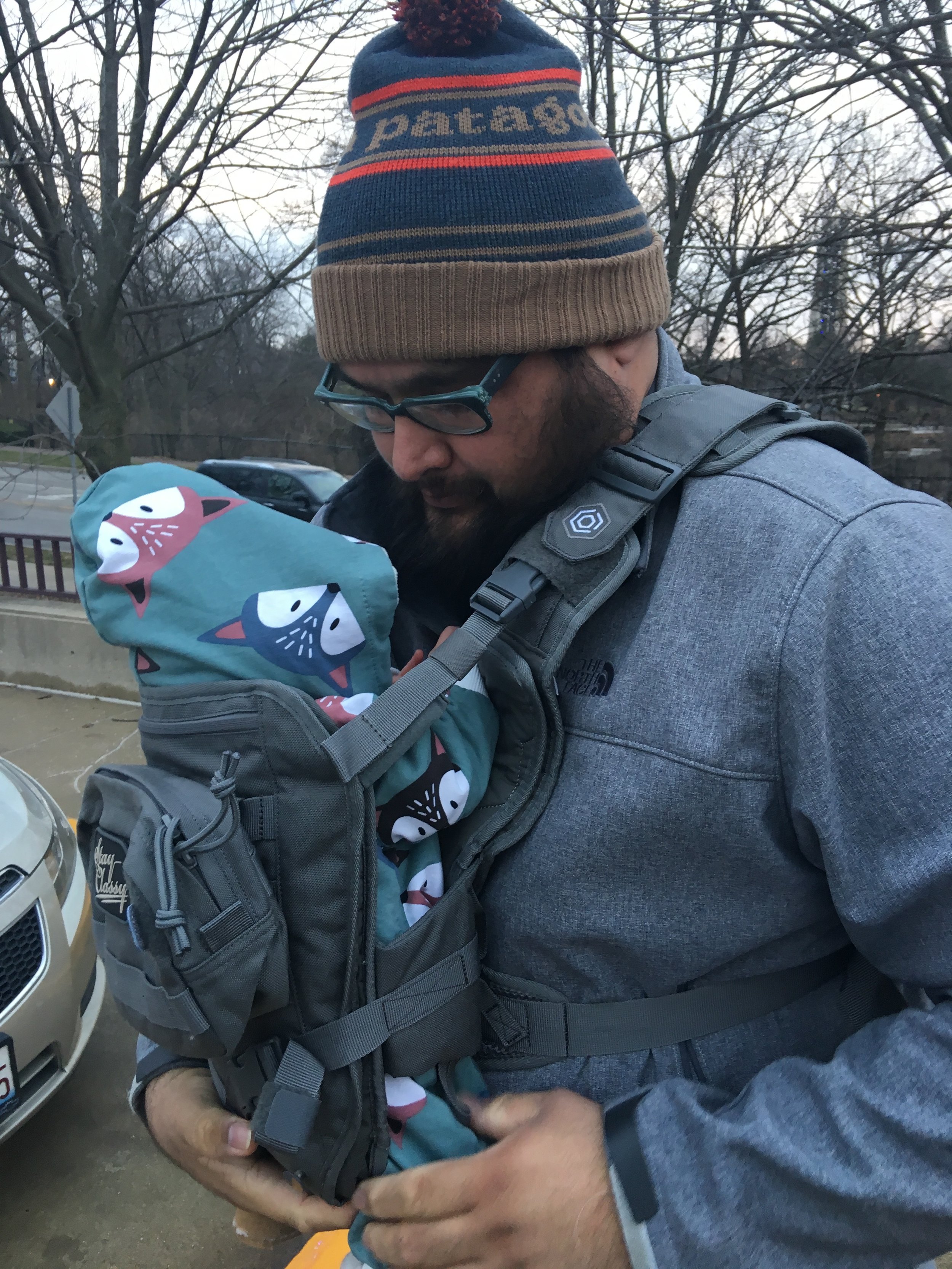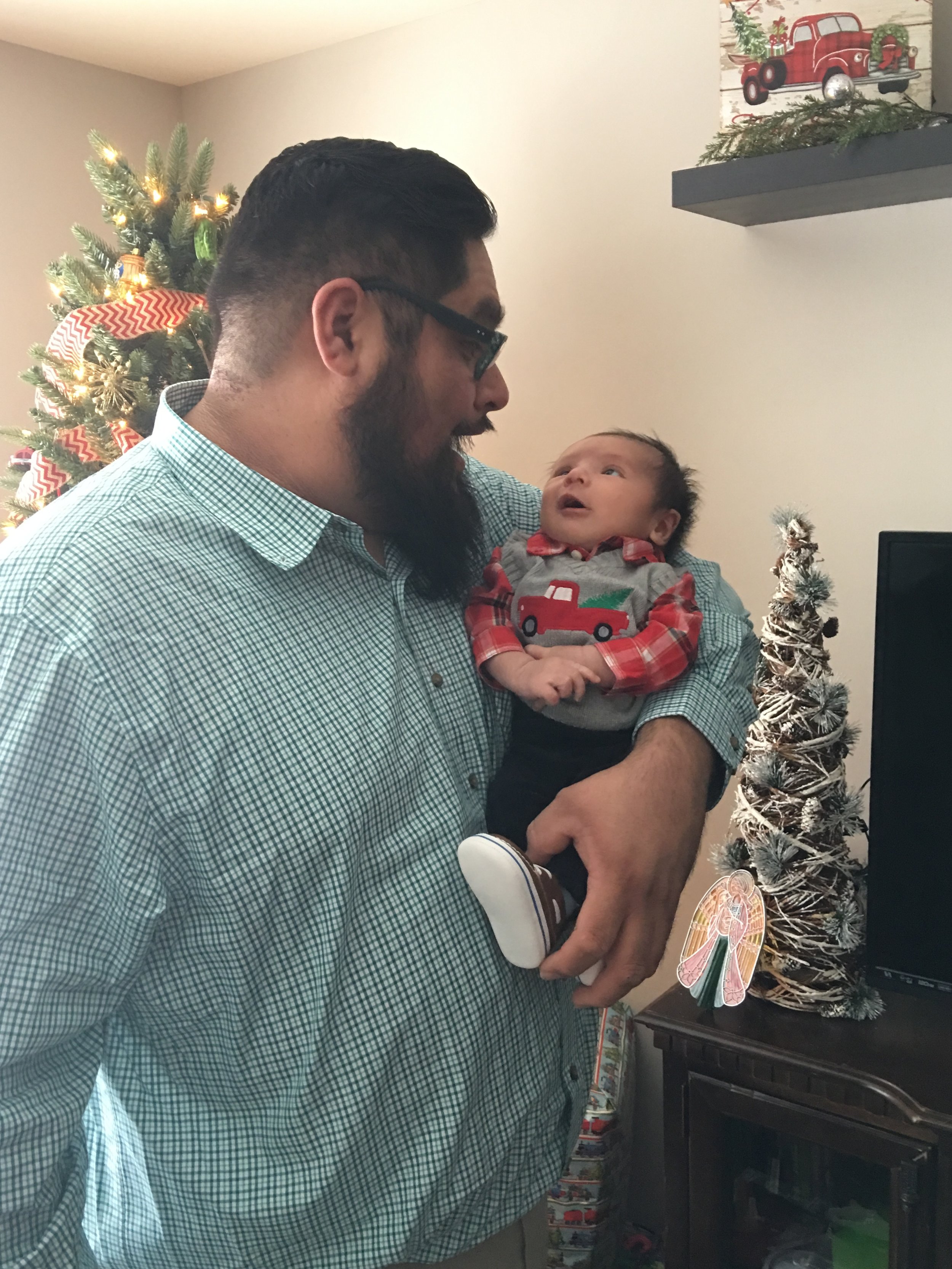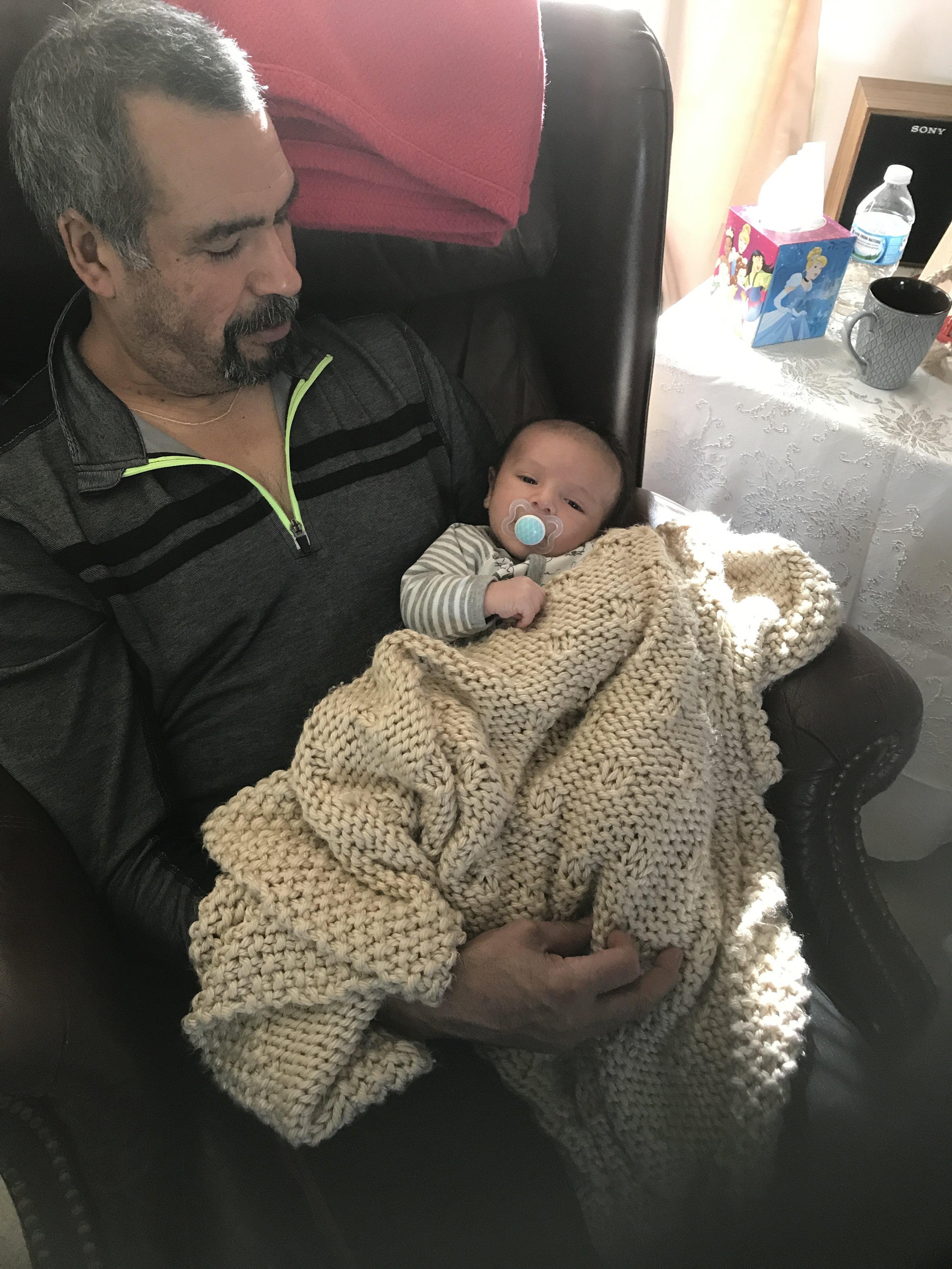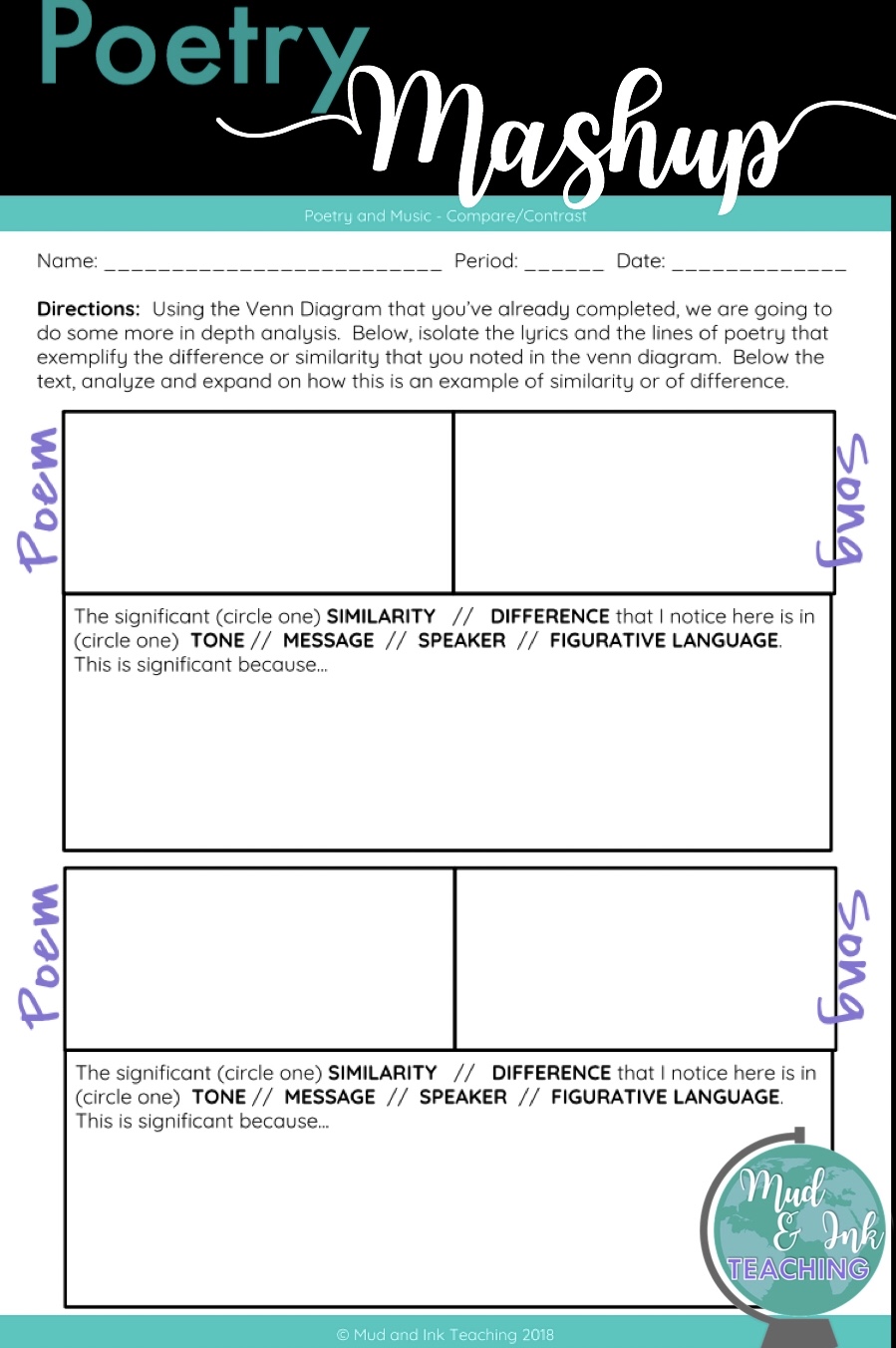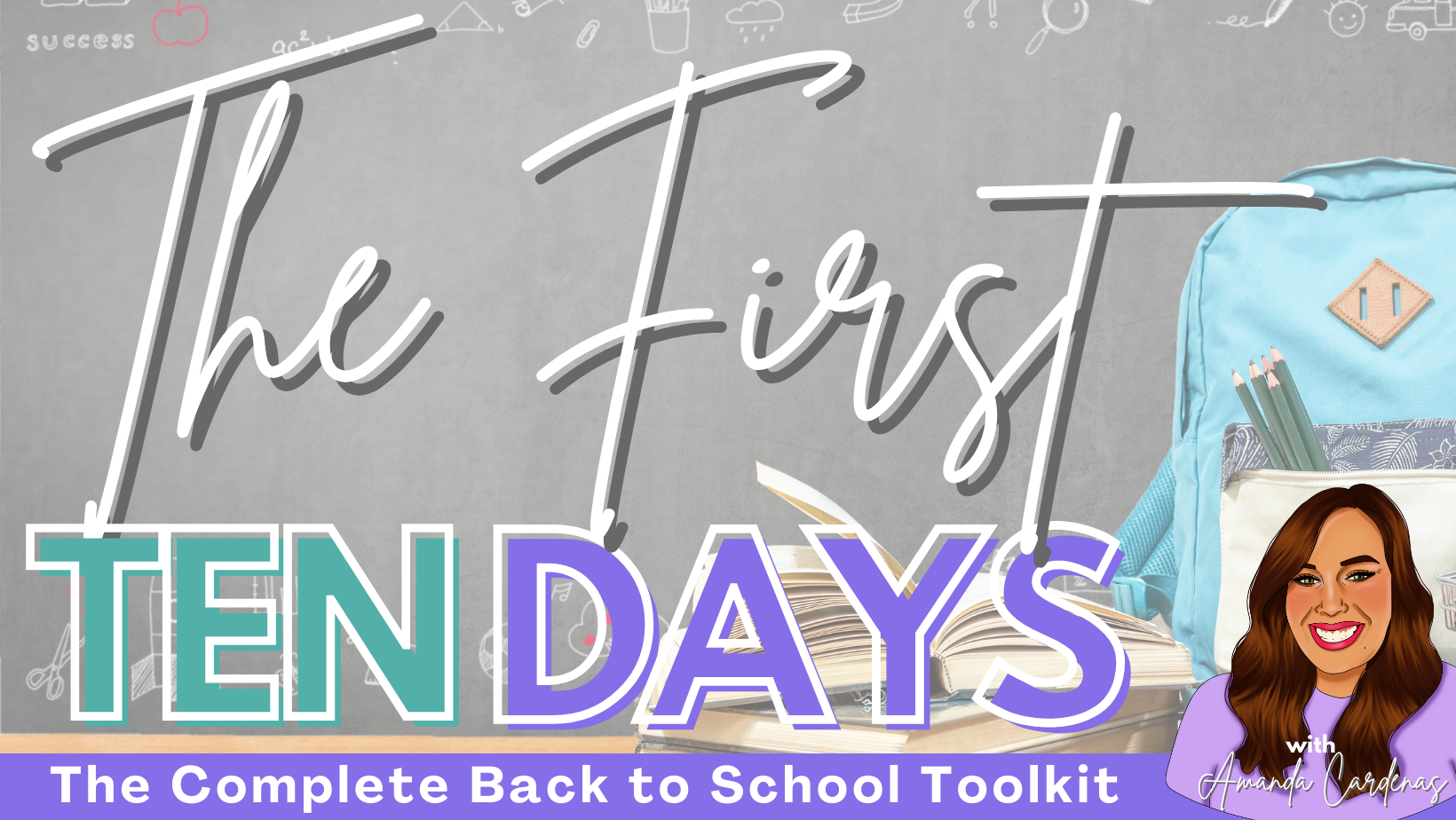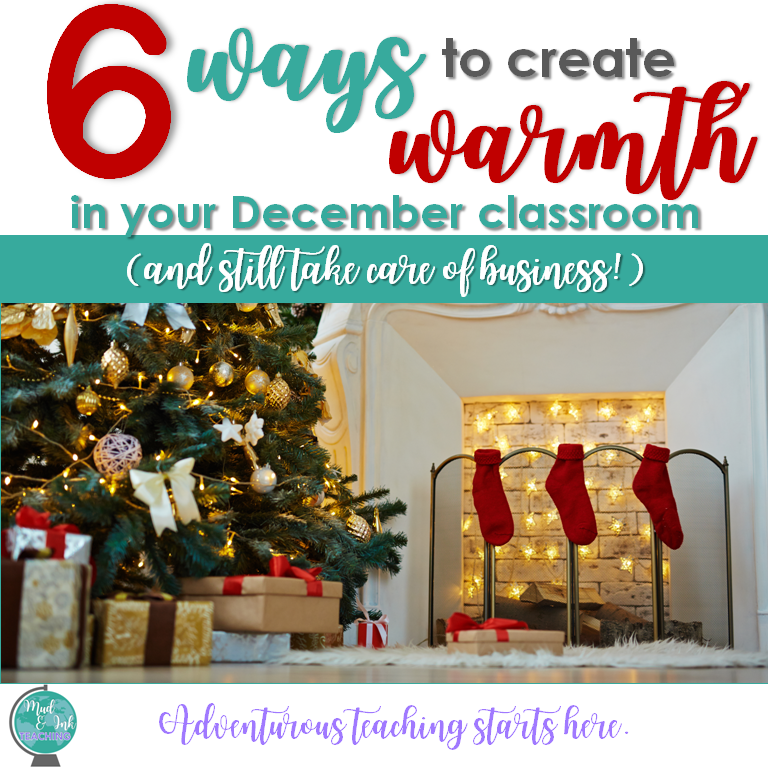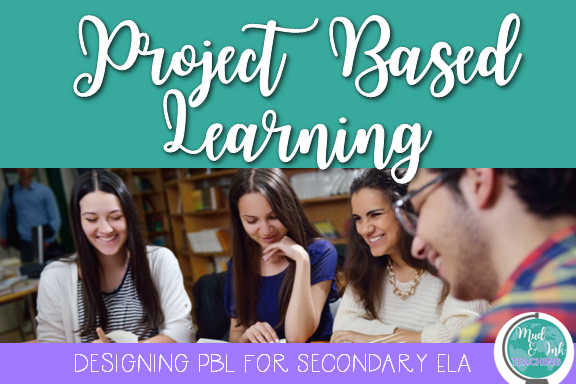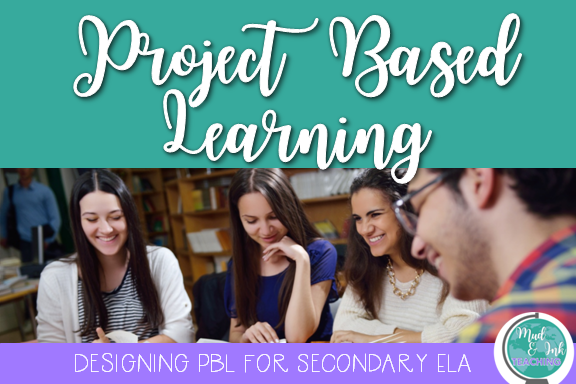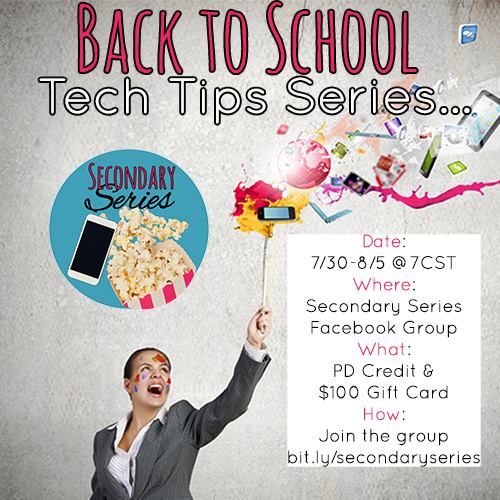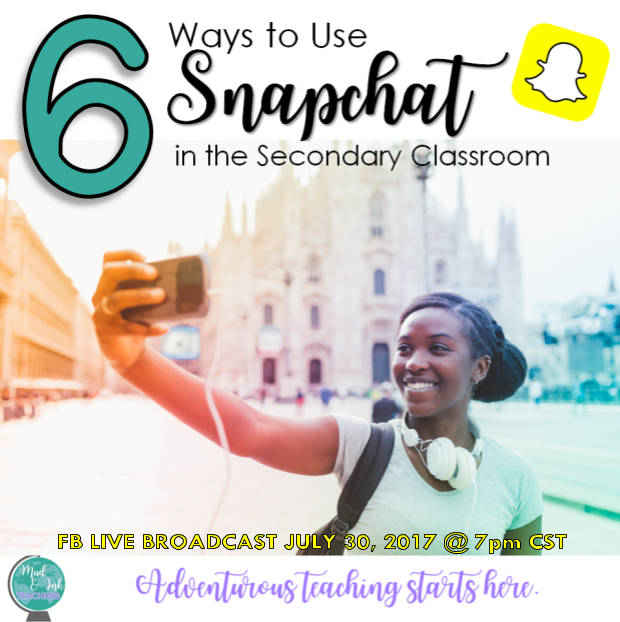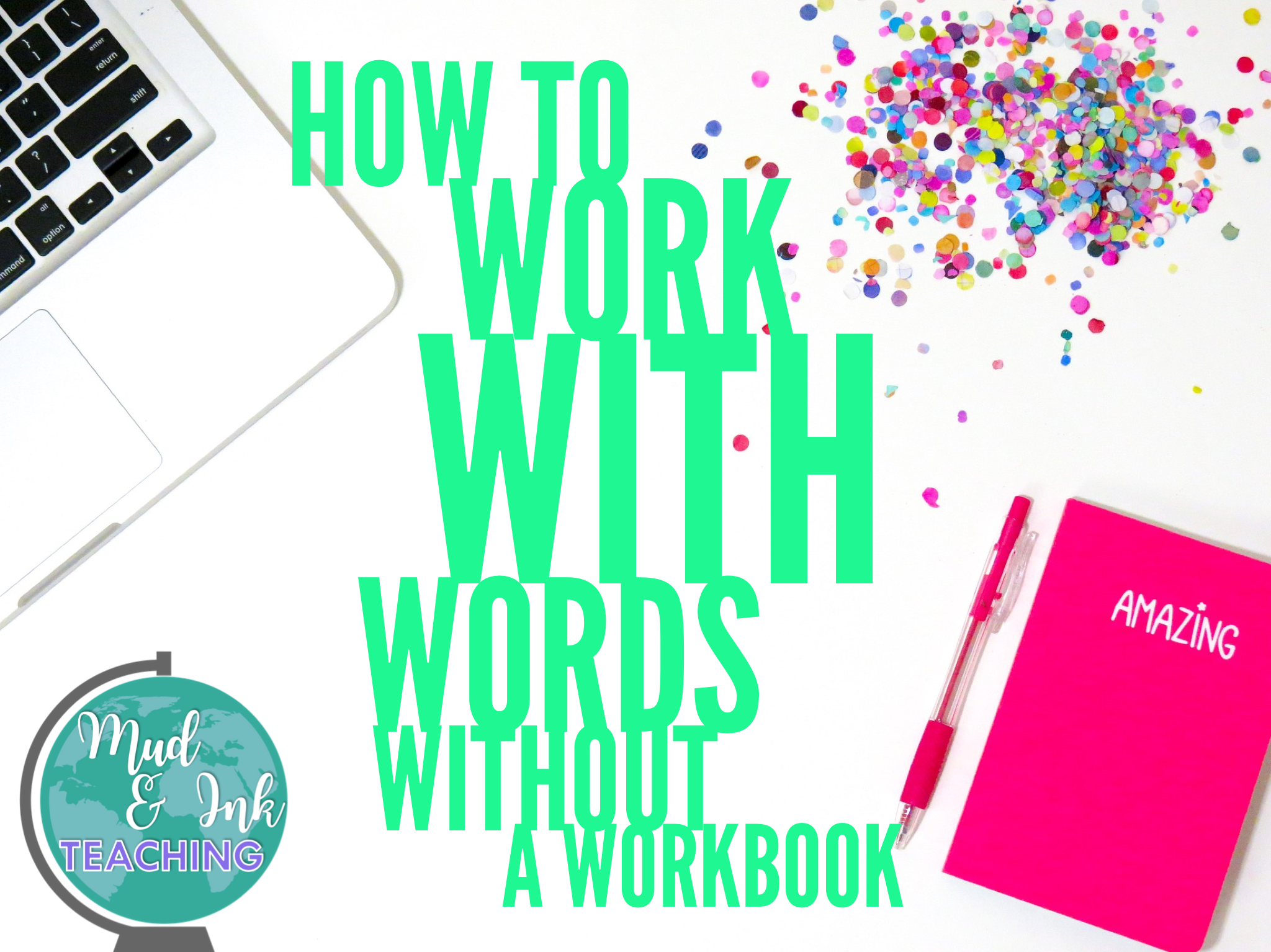
ADVENTUROUS TEACHING STARTS HERE.
6 Ways to get Started with Stations
When I first started teaching, I remember trying so many different ideas all the time in my classroom. It was exhausting running a new small group scenario or differentiation strategy several times per week, and over my many years of teaching, I’ve come to master a handful of strategies that are versatile and work EVERY time (at least NOW they do!). For me, learning stations are the way to go. I’d say at least once a week, I have my students engaging with content through a learning stations setup and I love it.
GETTING STARTED WITH STATIONS IN YOUR ELA CLASSROOM
When I first started teaching, I remember trying so many different ideas all the time in my classroom. It was exhausting running a new small group scenario or differentiation strategy several times per week, and over my many years of teaching, I’ve come to master a handful of strategies that are versatile and work EVERY time (at least NOW they do!). For me, learning stations are the way to go. I’d say at least once a week, I have my students engaging with content through a learning stations setup and I love it.
I rounded up some of my favorite learning station resources and talked to a few of my favorite ELA teacher friends to help you get started and inspired in your own classrooms - take a look at all of these goodies!
Permanent Station Signs
I use stations so much that I found a quick and easy way to make sure that they’re always ready for implementation - low prep and quick organization! Pick out a cute font, make signs for your stations (I usually use about 5-6), back your signs on card stock, and laminate! I hung these signs in my room where I usually tend to send students. Now, my kids know where to go every time I launch a stations activity.
2. Peer Review Stations - Interactive Bulletin Board
Have you guys met Ashley from Building Book Love? She’s not only a talented teacher, but a dear friend. I had to ask her about her peer review stations and here’s what she had to say:
“I love stations, but they can take a while to set up. That’s why I use the same set of peer review stations every time we do an essay. These work to improve essays before they get to me and allows me to give one-on-one feedback to each student before his or her final essay is due.
3. Annotation Stations
When I introduce the Prologue for Romeo and Juliet, instead of having students annotate as a whole class, I send them to stations! At each of the stations, the students close read and examine one specific purpose of the prologue in one highlighter color (i.e. pink highlighting for all of the sonnet features). Then, when the students rotate to the next station, they change highlighter colors and change annotation focus. By the time we come back together as a whole class, every student has had the chance to think, discuss, read (and reread) the prologue multiple times. We have a rich discussion involving everyone, not just the kids who always raise their hands first.
4. MLA Research Stations
My friend Melissa at Reading and Writing Haven loves learning stations, too! Here’s what she recommends trying in your classroom:
Research shows that direct instruction, when used appropriately for the age group, has great benefits. Still, when I’m teaching a complex topic, students need a lot more practice and exposure than they can get through a short lecture or a worksheet. Some concepts lend themselves really well to learning station approaches because they are multi-faceted, and they need to be studied from various angles. One of my favorite learning station lessons is for MLA research skills. I give students various scenarios, and we look at in-text citations as well as embedding quotes in essays in ways that move them from a basic level to deeper understanding. It’s interactive, and students love it!
5. Grammar Stations
My friend Lauralee at Language Arts Classroom is a grammar guru - no joke. Here’s how she incorporates stations into her grammar lessons:
“Learning stations provide huge benefits for grammar lessons. Teachers can see individual struggles and clarify misunderstandings as they rotate through stations. Check out grammar stations and other alternatives to the grammar worksheet and see an example here!”
6. Advice from The Stations Queen: Write On with Miss G!
If a crown for Stations Queen was in existence, I think all of Instagram would hand it over to Miss G! Abby has been using stations to replace all kinds of old school teaching practices, and when I asked her why she loves stations so much, here’s what she had to say:
“Stations are a staple in my high school ELA curriculum, but I especially love using them during novel units. I’ve ditched my old pre-reading PowerPoints in favor of stations to introduce literary movements/historical context for all of the literature we read. Stations are also perfect for avoiding the dreaded packets of chapter questions and breaking up the monotony that can sneak up during novel units if you’re not careful. You can even use end-of-novel learning stations to wrap up key discussions on symbolism, character development, theme, author’s purpose, and more.
Lucky for you, I have a series of posts all about learning stations, so feel free to check out my blog for even more tips and tricks:
10 reasons to implement learning stations in the secondary classroom
How to facilitate successful learning stations in the secondary classroom
If you are ready to get started with using stations in your ELA classroom, check out Miss G's learning stations for ANY text! These standards-aligned learning stations are engaging way to wrap up any novel unit and challenge your students to collaborate and critically think while practicing literary analysis skills.
SHOP MY FAVORITE STATION ACTIVITIES:
Using Padlet to Teach Claim Writing
Writing the claim. It’s the sentence we hype up, the “one sentence that holds the WHOLE PAPER TOGETHER!!!” No pressure, right?
Well the truth is, there IS a lot of pressure to get this sentence right and a lot of pressure on us to help students write them. My kids want a formula, which I give them, but only as a starting point. The strongest claims exist beyond the “three pronged claim” formula and getting kids to write better statements organically is a seemingly insurmountable task.
Enter: PADLET.
Writing the claim. It’s the sentence we hype up, the “one sentence that holds the WHOLE PAPER TOGETHER!!!” No pressure, right?
Well the truth is, there IS a lot of pressure to get this sentence right and a lot of pressure on us to help students write them. My kids want a formula, which I give them, but only as a starting point. The strongest claims exist beyond the “three pronged claim” formula and getting kids to write better statements organically is a seemingly insurmountable task.
After covering your essay prompt and showing students what I call a “Below Basic” level claim on my rubric, encourage them to take the sample and take some risks trying to improve it. For our English 3 Unit 1 essay, I ask my students the essential question from the start of the year: What are American values and how do they shape identity? Students are charged to answer the question using a minimum of two sources from the readings that we covered in Unit 1. A Below Basic claim that I suggest as a starting place is as follows:
American values are ____________ and ____________ and they each shape identity
On our rubric, this claim (with the blanks filled in accurately) would equate to a “D”. For homework that night, students are asked to write their own claim. I show them how to play around with syntax, we talk about how they can elaborate on the “shaping of identity” piece of the claim, and so forth.
Enter: Padlet.
Padlet has recently changed over to a paid version (as of fall 2018), so if you’re using the free version, you can only use three padlets at a time. Don’t worry - when you finish with one padlet, you can delete it and keep using the service, but your total number of Padlets cannot exceed three (or what you already had before the service was switched over).
Think of Padlet as a giant magnetic whiteboard. Each student has a digital post-it note of sorts. When students have their claim drafts, I create a basic Padlet using the WALL format. All claims from all three of my junior classes gather together on one screen.
Next, I change the layout. First, I click on the three horizontal dots at the top right hand side of the screen and select “change layout” and choose SHELF. From here, I can build columns. I label each column with my rubric headings: Distinguished, Proficient, Basic, and Below Basic. It take about ten minutes, but I then sort out all of the claims into the column where I think they currently belong.
The next day in class, I sent the students back to the Padlet and we dug in! This week, I told them how I categorized the claims, but what I wish I would have had time for is having the students try to determine how the columns work. I’d like to see them write me a definition for each category and tell me “My claim is in the proficient category because….and in order to improve it, I need to….”. That’s an ideal scenario.
Regardless of the scenario, this gives students a lot to work with: authentic feedback, actual student writing to use as mentors, and a second shot before the actual paper begins to get their claims closer to their full potential.
SHOP THE MUD AND INK TEACHING STORE
My Favorite Ways to Practice Teacher Self Care!
It took me a long time to prioritize and understand how important self-care is as a teacher. For the first eight years of my career I burned through hours of grading, planning, rearranging, and constantly making myself available to students. Those eight years were rewarding and I sure learned a lot about my profession, but I also felt (and still feel) the physical and mental health consequences of making y life 100% dedicated to teaching.
It took me a long time to prioritize and understand how important self-care is as a teacher. For the first eight years of my career I burned through hours of grading, planning, rearranging, and constantly making myself available to students. Those eight years were rewarding and I sure learned a lot about my profession, but I also felt (and still feel) the physical and mental health consequences of making y life 100% dedicated to teaching.
While many self-care practices DON’T require buying anything at all, I wanted to share just a few of my favorite small indulgences with you! These are some of the products I’ve found that I look forward to using regularly. Some of these I actually have a subscription for, so they show up on my door once every two months as a reminder to SLOW DOWN and TAKE CARE OF MYSELF!
Some links shared below are affiliate links (which means I may receive a small compensation if you choose to purchase an item linked).
1. My Jade Roller
I actually first saw these on Season 1 of Queer Eye when Jonathan gave them to a couple of his clients. I thought it was kind of hocus pocus - rolling a rock on your face to help your skin feel better. But then I gave in and bought one. Let me tell you...this thing is a GAME CHANGER. On both stressful and normal days at school, I simply pull out my jade roller from my desk and give myself a little cool down. It’s like a mini-face massage in the middle of the school day! Here’s the one I have, but there are so many more to look through. The quartz roller seems to be good, too, but it’s pricier than the jade one!
2. Oatmeal Mask
This oatmeal mask was actually recommended to me by a fellow Instagrammer friend of mine last winter. I had my son in November, and after childbirth in a Chicago winter, I had the worst dry skin I’d ever felt in my life. This oatmeal mask was a total lifesaver and I still order it to this day! It goes on thick but only takes ten minutes to feel refreshed and renewed -- perfect for the busy teacher life!
3. This Yoga Music YouTube Channel
I try to grab at least five minutes of my day in peace. I’m not really one for meditation exactly, but I do just like to enjoy quiet and a little soothing music in the background. For me, this is usually right when I get to school. I put my things down, get my coffee, keep the lights off, and just sit at my desk with something from this channel playing in the background. It’s such a calming way to start each teaching day, which as we know will inevitably turn to chaos as soon as kids walk through that door.
4. Mint-Shimmer Lip Gloss
This is a Bath and Body Works favorite of mine, and honestly, I usually can’t walk out of that story with ONLY this. When it comes to treating myself to lip care, this is one item that I splurge on: the mint-infused shimmery lip gloss. Normally, I’m a drugstore Chapstick and Revlon lipstick kinda girl, but I love the refreshing treat of this lip gloss when I’m treating myself. It smells and tastes so good and has just enough shimmer to make my lips be a slightly different color from the rest of my face.
5. Ghirardelli Hot Chocolate
Not too far from our house is an epically large and amazing outlet mall. Besides all of the shopping there is to do, they also have a GHIRARDELLI OUTLET. Free samples galore and at the back of the store, they have a small little cafe. The hot chocolate from there is out of this world. I always order one to go and grab a few packets to take home so I can enjoy them during my “me time”, especially in the winter.
6. Aloe Socks
If you’ve never tried aloe socks before, it’s seriously time that you tried! These socks (there are tons of different brands - check Kohls, too!) are not only crazy soft, but they’re infused with aloe, so while you wear them and relax, they’re actually moisturizing your feet. Put these on while drinking your hot cocoa, listening to yoga music, wearing your face mask, and NOT thinking about school! :-)
Mud and Ink Resources for your Classroom
RIP Powerpoint Lectures
Long gone are the days that I stand in front of my class before the start of a novel and go through a three day powerpoint slide. Ten years ago, that was best practice for so many of us. They were lessons I looked forward to, but I fear it’s because I loved being center stage. The trouble with that? Planning lessons so highly teacher-centered just isn’t the way to go! We can do better and I have six solutions today that you can try.
Six Alternative Building Background Strategies for ELA Teachers
**This post may contain affiliate links. By purchasing a product through an affiliate link, I may be partially compensated for your purchase**
Long gone are the days that I stand in front of my class before the start of a novel and go through a three day powerpoint slide. Ten years ago, that was best practice for so many of us. They were lessons I looked forward to, but I fear it’s because I loved being center stage. The trouble with that? Planning lessons so highly teacher-centered just isn’t the way to go! We can do better and I have six solutions today that you can try.
1. QR Code Stations:
This is by far one of my go-to favorites! To create QR Code stations, begin by identifying five or six strong, engaging websites, videos, or other web-based sources. Each source should explore a different element of the background information needed before starting your next novel/unit of study. If you think about what you would have used originally to put in a powerpoint full of information, take that same information but put it into distinct categories.
Once you’ve found your websites, all you need to do now is create your QR codes and the handout students will use as they travel around the room visiting each station. For the handout, I simply create a table (3x3 for six stations) and design a pointed, specific question for each station. To create the QR codes, I use this QR code generator (it’s free!), and then print out a sign for each station that says Station 1: and the QR code. Finally, print and hang up your stations and print or make your student handouts electronically accessible and your lesson is ready!
Looking for a lesson to get you started? Check this one out: Villain Archetype Digital Stations Activity!
2. Artifact Carousel:
This is a no-tech, hands on version of the QR Code Stations activity. Instead of finding websites and videos, in this approach, you’d bring in physical artifacts for students to examine. Students travel around the room from artifact to artifact recording their observations and making predictions as to what they might mean or signify in the context of the next unit that you’re beginning.
For example, before I start teaching a Shakespeare play, I might give students the heads up that we are in fact starting Shakespeare, but I want to see what they know about him and his life before beginning. One artifact I like to use is a sun (picture or other toy/item from around the house). The kids look at it, discuss it, and make guesses as to why I would have included that as an artifact leading up to a study in Shakespeare. When the carousel is over, and after hearing a number of student guesses, I would reveal to them that the sun is included because all of Shakespeare’s plays had to take place during the day time because the Globe did not have electric lighting. Also, Shakespeare uses some beautiful poetic language to describe night because it would have be be imagined during the play. Have fun choosing your artifacts! When Shakespeare is concerned, I love using a plastic skull head (to talk about drama), a stick of deodorant (those groundlings were pretty stinky!), and a crown (to talk about Shakespeare’s connection to Queen Elizabeth). It’s great to watch the kids work together making predictions and actively pulling together their background knowledge.
3. Persona Poem:
I love this creative writing approach to starting a novel! If you’ve never written or heard of persona poetry before, it’s really quite simple, and at the same time extremely powerful for students. The idea of a persona poem is to take on the “persona” of another person (or in some cases object). So, before we started Of Mice and Men, I shared with the students some of Dorothea Lange’s photography of the Dust Bowl and Great Depression. After viewing and discussing the photos, I asked students to write a poem from the perspective (persona) of someone they saw in the pictures that day. By having students work to put themselves in the shoes or life of the context of the novel before reading it, they were ready to start meeting characters once we started reading. I love these two persona poems to use as examples (use at your discretion) by Jamila Woods and Margaret Atwood.
4. Pear Deck/NearPod:
These two tech options are a great alternative to the powerpoint lecture. Both Pear Deck and NearPod allow you to communicate a lot of new information to students quickly, but they have built in methods of checking for understanding and interaction along the way. Each platform has their own unique style, so be sure to check them both out to see which fits best with your goals.
5. Text Scavenger Hunt:
Does your text have features that would be helpful for students to discover ahead of time? Maybe your next novel has really intriguing chapter titles or a particularly telling epitaph. If you’re starting a play, there are probably lots of features that you want students to discover and discuss before starting. And if you’re starting some nonfiction, there are probably some important different ways of sectioning the text that your students should notice ahead of time, too. To create a text scavenger hunt, I usually identify a few important features (titles, characters, vocabulary, structures, table of contents, author’s notes, dedications, the cover picture(s), etc.) and send the students on a scavenger hunt through the text to find each of the components I’ve identified. Then, students can work in pairs to find each of the elements and at the end of the class period come together to discuss the significance of all their findings.
6. TedEd:
If you haven’t used TedEd yet, what on earth are you waiting for?! Similar to EdPuzzle, TedEd videos take students through a TedTalk with layered questions. There is also a discussion board option that I LOVE using with students! TedEd has tons of pre-created lessons connected to videos, but also offers educators the chance to design their own lessons, too!
How to Build a QR Code Classroom Management System
Starting in a new school next year had me all amped up to dig in hard to my classroom decor, but I was able to take a big, deep breath, and focus on what classroom DESIGN really means. It means functionality. It means positive behavior. It means creating a space where my students can learn and be their best selves. What it DOESN’T mean is splurging for every adorable Dollar Spot or “hot steal” that I find while endlessly shopping this summer.
So I set a budget. $100. 24 hours. I resolved to spend my time and hard earned money on my family this summer and not get out of control with projects and cash for my classroom. It’s tempting to think I have to do ALL THE THINGS with a brand, spanking (institutional-looking) new classroom this year, but I don’t have to do that. And neither do you
This all started as part of Ashley Bible’s #classroomdesignchallenge. Starting in a new school next year had me all amped up to dig in hard to my classroom decor, but I was able to take a big, deep breath, and focus on what classroom DESIGN really means. It means functionality. It means positive behavior. It means creating a space where my students can learn and be their best selves. What it DOESN’T mean is splurging for every adorable Dollar Spot or “hot steal” that I find while endlessly shopping this summer.
So I set a budget. $100. 24 hours. I resolved to spend my time and hard earned money on my family this summer and not get out of control with projects and cash for my classroom. It’s tempting to think I have to do ALL THE THINGS with a brand, spanking (institutional-looking) new classroom this year, but I don’t have to do that. And neither do you.
ENTER: QR CODE PROJECT!
So I was looking around at what I had to upcycle and a pile of old, leftover-from-college frames were stacked up in my closet. After looking back at some old, slightly embarrassing pictures, I decided it was time to ditch the old pics and upcycle the frames for my new classroom.
REHABBING THE FRAMES:
This was pretty simple. After deciding on my color scheme for the classroom (a FREE way to focus on what you do buy -- ask yourself, “does this fit my “mood board” and colors?), I bought some spray paint ($12 out of my budget) to upscale these old frames.
Remove backing and glass from frames
Wipe down frames and let them dry
Find a well-ventilated place to spray paint and lay frames on some scrap cardboard or newspaper
Spray away! Mine are really imperfect (you can see drips on some of them...whatevs!).
BUILDING THE QR SYSTEM:
Next, I selected the frame that had the openings that would work best for my system. The frame I chose had nine openings and I had six QR codes that I really wanted to streamline for my classroom. I decided to use the remaining three spaces for motivational sayings and a “title” square!
Here are the management systems I wanted easily accessible for students:
TARDIES: This QR code is connected to a Google Form that simply asks for student names, class period, date, time, and reason for tardy. When students walk in tardy, they will hand me their pass and I’ll quietly point at the frame (I’m going to keep by the door to start). Students should scan the QR code for either English 1 Tardies or English 3 Tardies, fill out the form and click submit. For students that don’t have phones or QR readers on their phones, I will also keep the form on Google Classroom and I’ll give them that as an option as well. This gives me a digital record of tardies right at my fingertips. I know school tracks these as well, but it’s nice to have a set of my own data...especially for regular offenders. It is also pretty annoying to have to report your own tardy and explain yourself as to why you are tardy again. This is a great tool to have handy at parent-teacher conferences!
ABSENT WORK: OMGGGG PEOPLE. There are many pet peeves in the teaching world, but for me, nothing is worse than that whiny voice asking, “Sooo….what did I miss yesterday??” The voice that comes from a student with his hand raised 17 minutes into class. The voice that comes from a student via an email three days after the absence. No matter WHAT policy, folder of work, Google classroom reminder, absent buddies, calendar, or other attempt at curbing this insanity, I’ve found only ONE THING that really works. At the end of every day, I take two pictures: the first is a picture of my English 1 board where I write down the agenda and homework and the second picture is the board for English 3. I snap the pics, add them to their Google albums on my phone, and I’m done. These QR codes in the frame link directly to those photo albums. So when kiddo asks me what she missed yesterday, now, I can reduce my blood boil to a simmer and simply point at the frame. The end.
YOUTUBE PLAYLISTS: The last two QR codes link to two YouTube playlists that also help me answer some FAQs during the school year. I always have students asking me for independent reading and poetry suggestions, so I simply put together a playlist and linked them here in the QR code!
BUILDING YOUR OWN QR SYSTEM:
First, decide which classroom management pieces you think could be resolved easily and independently by your students.
Create the Google form, the doc, the website, the spreadsheet or the playlist that you need.
Link your items to a QR code (I just used this QR code generator).
Measure your frame openings and create a template in PowerPoint or Google Slides (it’s so much easier to move text around freely than on Word or Docs!)
Title each frame opening with the system that is on the QR code and insert the code onto the image.
Print, cut and place your QR codes in the frame!
NOTE: All of my fonts came from Fairways and Chalkboards on TpT!
HOW DO KIDS READ THE CODE?
Currently, both Google Photos and Snapchat have QR code readers installed. If the student opens Snapchat and takes a picture of the code, it automatically directs them to the website. Students can also download QR code readers to their Chromebooks and cell phones. Like I mentioned above, I always have students who just prefer to get out their computers and fill out the form online, so I make sure that option is available.
FRAME IDEA!
I upcycled mine, but if you have it in your budget, how cute could this be? (This is an affiliate link, which means, if you purchase the item, I will receive a small compensation from your sale)
I hope that was helpful to you and you’re inspired to try something upcycled and tech-driven to help your classroom management systems improve this school year!
SHOP THE MUD AND INK STORE:
My 9 Favorite Fictional Moms {and one real one, too!}
#MomLife is new to me this year, so this will be my very first Mother’s Day! The journey through motherhood has already (in just five and a half months!) surprised me with a joy that I could never capture in a sentence.
To celebrate, I’d like to share my list of my FAVORITE Fictional Moms. These moms span from childhood picture books to blockbuster hits, from traditional mother figures to nannys and caretakers. Here are my favorite fictional moms and how they exemplify and celebrate the real moms in our lives.
#MomLife is new to me this year, so this will be my very first Mother’s Day! The journey through motherhood has already (in just five and a half months!) surprised me with a joy that I could never capture in a sentence.
To celebrate, I’d like to share my list of my FAVORITE Fictional Moms. These moms span from childhood picture books to blockbuster hits, from traditional mother figures to nannys and caretakers. Here are my favorite fictional moms and how they exemplify and celebrate the real moms in our lives.
Love these mammas as much as I do?
Grab this free download! These are easy print-and-write cards for your students to write to their moms. Each card contains a famous quote from each of these incredible women!
1. Miss Honey - Matilda
Jennifer Honey has a special place in my memory of childhood reading. I remember loving Matilda and loving Miss Honey even more. While Miss Honey is Matilda’s adopted mother, she reminds me of how much she inspired me to be a teacher and how important all of my elementary school teachers were. They, too, fostered a love for reading in me that grew into a college degree in English and secondary education. Miss Honey is the ultimate teacher/mother figure that embodies the compassion and love for both children and reading that so many incredible teachers manage to do, just like her.
2. Offred - The Handmaid’s Tale
In The Handmaid’s Tale, we only get to learn about Offred’s experience as a mother through her flashbacks. At the beginning of the novel, her daughter is ripped from her arms and never seen again - a true horror story for any parent Through her detailed memory, readers cling to tiny moments of their family before the government collapsed. Offred remembers smelling the back of her daughter’s hair - this is literally the first thing my mom and I do as soon as we get to hold a new baby: take a big whiff of baby smell! I imagine Offred (well, whoever Offred used to be) would have been an amazingly kind, loving mother.
3. Mrs. Doubtfire - Mrs. Doubtfire
Oh, Robin Williams. We miss you so much. Mrs. Doubtfire - the cross-dressing dad who wants to be near his children during a difficult divorce nanny mother figure - has to be one of my favorite fictional moms. Mrs. Doubtfire shows playful looks at the feminine side of mothering, but at its heart, the story is all about the inseverable tie between parent and child. The extremes that Mrs. Doubtfire would go to in order to be near his children and be in their lives are remarkable, and downright heartwarming.
4. Leslie Knope - Parks and Recreation
Leslie doesn’t become a mom until the second to last season of the show, but when it finally happens, she “hits triple cherries” on her first try! As the mother of triplets, Leslie manages to maintain a household (and never apologizes for its lack of order), works full time, and supports a husband running for congress. She’s the ultimate working mom that struggles in so many real ways that I can relate to. She’s pure badass at work and shows us that it’s okay to ask for help with our kids when we need it.
5. Frankie Heck - The Middle
No show in the history of TV shows reminds me more of my OWN family than the Heck family. Chillin in suburban Indiana, Frankie is an hysterical, unapologetic mom of three. She finds plates under her son’s bed, forgets about her other son’s birthdays, and is just about as real as it gets. Her huge heart and sarcastic sense of humor are some of her most admirable qualities.
6. Minerva Mirabal - In the Time of the Butterflies
During the late 50s, the Dominican Republic was suffering through the reign of a tyrannical dictator. The Mirabal sisters, famously nicknamed “Las Mariposas”, were the leaders of a revolution against that horrible regime. Minerva, a mother, fighter, and true ambassador for justice, shows us how to be the role model a mother should be for her children - and in Minerva’s case - for her entire country. She's not a fictional mom, but her legacy is written in Julia Alvaerz's historical fiction account of their history called In the Time of the Butterflies.
7. Marmee - Little Women
Sweet, docile Marmee is one of my favorite mother figures from my chidhood. I read and watched Little Women at least twice a year and was enchanted by Marmee’s wise words, encouraging speech, and her biting discipline. She especially showed us how moms have a gift for giving each of their children what each child truly needs -- I can still distinctly remember the scene where she hugs Jo after chopping her hair off comforting her and reminding her that it will grow back.
8. Claire - Lost
So...you’re on a plane, you’re eight months pregnant, and your psychic told you not to get on that plane. Oh - and your plane is taking you from Australia to America so that you can have your baby and give him up for adoption in California. Thennnnn your plane crashes on an island, you survive the end of pregnancy on said island, then deliver the baby in the middle of the jungle haunted by a crazy, murdering monster. You go, Claire. You go.
9. Rosa Huberman - The Book Thief
She’s a tough one, but Rosa Huberman might be my favorite mom on this list. No only does she adopt Leisel out of the kindness of her heart, but she finds a way to stretch every dollar and every meal so that everyone is taken care of. She provides refuge and protection at all costs for the ones she loves, and although she swears like a sailor, everyone in her family loves her for it.
...and one real one: Michelle Obama - Mother-In-Chief
She’s not fictional, although sometimes I feel like her time in office felt like a too-short lived fairy tale. Michelle Obama has been a champion for her own children as well as America’s children. I’ve never gotten to meet her, but if I did, man would I just give her a huge hug. I don’t know how on earth I would ever be able to raise two daughters in that kind of a spotlight during their childhood in the White House, but she managed to do it. Michelle Obama was able to simultaneously be knee deep in dirt planting an herb garden AND dressing up in the most elegant evening gown to wrestle international politics with equal poise. That’s #goals.
SHOP THE MUD AND INK STORE:
Slam Poetry 101: An Introduction
I can't think of a more authentic experience that I've had teaching poetry with my students than through the incredible power of slam poetry. Here in Chicago, we're lucky. The slam poetry scene is strong. We're actually the city that gave birth to the slam poetry movement in the 80s...
I can't think of a more authentic experience that I've had teaching poetry with my students than through the incredible power of slam poetry.
Here in Chicago, we're lucky. The slam poetry scene is strong. We're actually the city that gave birth to the slam poetry movement in the 80s. Blue collar, steel worker Marc Smith decided that he was sick of the elitist stigma attached to poetry and he was determined to change that. With a drink in one hand and a poem in the other, Marc Smith took the stage at the Green Mill Lounge (formerly one of Al Capone's secret hideouts), and began building the slam poetry movement.
From there, Chicago continued to grow on the poetry scene as the famed Louder Than a Bomb was created for the youth in Chicago as a way to patch together a massively segregated city. Louder Than a Bomb is the world's largest teen poetry competition and cities all over the world are starting to create their own Louder Than a Bomb tournaments. We had the incredible opportunity to bring teams several years in a row to competition: we took kids from mixed backgrounds, all different kinds of stories, wrote poems, practiced and rehearsed them, and finally performed them on a stage in front of total strangers and five judges.
What is Slam Poetry?
Slam poetry is a competitive form of spoken word poetry. Students can perform poetry all they want, but for it to be a SLAM poem, that means that it's ready for battle! The idea of poetry being a "competition" is ludicrous, as admitted by founder Marc Smith. As the saying goes, "the point is not the points, the point is the POETRY". The only reason slam poetry is a competition is to get the audience to fill seats. Before slam, poetry readings were characteristically boring and not really an event anyone was interested in attending. By adding the competition element to poetry, slam helps to build a new, energetic, excited community around poetry. Please remind your students that, essentially, the competition is a complete and total joke.
Who are the judges?
At a "real" slam, the judges should be total random people pulled in from the street or even the audience. The "judges" should be ordinary people who like poetry - not professors or other experts. The judges usually provide a "reason for selection" to the MC and those reasons are usually pretty funny! Before the start of the slam, the MC introduces the judges with lines like, "Alright everyone, it's time to meet the judges. Let's cheer for them now because later, you'll probably be pretty mad at them! Let's meet Leslie - she's qualified for judging a slam because she has a pet bulldog. Let's clap for Leslie!" Once all of the judges are introduce, they will usually judge a primary "sacrificial poet" to calibrate their scoring. Each judge has a whiteboard and is directed to score the poems on a scale of 1-10 with only one decimal place. If you are able to get five judges, you will drop the high and the low score, then total the three remaining scores for each performance.
What are common themes or topics in slam poems?
When I listen to the young people in Chicago speaking their truth on the stage, these poems are filled with passion. They are typically deeply in touch with a social justice issue, namely: equality, gun violence, cultural acceptance, and poverty. Poems are often about family, about how childhood has affected these students, and about their uncertain futures. The poems are optimistically hopeful and painfully despondent. The answer is, there is no common theme or topic, but the poems are deeply personal to each and every poet. And you can FEEL IT. You can feel it coming out of their souls on stage. If your students are searching for a slam poem topic, have them start with where they're from, a story from their lives. If they're faking their passion in the poem, the audience will know right away.
How does one "win" a poetry slam?
At the end of the slam, all of the points have been added up for each poet. The top TWO poets move on to the final round. In this round, the audience chooses a completely random topic by shouting them out to the MC. The MC chooses one of them, let's say "hippos", and then gives the two final poets two minutes to write a new poem on the topic of "hippos". At the end of two minutes, the poets read and the audience decides on their winner based on the almighty applause-o-meter.
How can I host a slam in my classroom?
Let me stop you right there. First, you need to decide what kind of atmosphere you want in your classroom. An OPEN MIC might be a better option for some teachers: at an open mic, all students read their poems aloud to the class, no judges, no scores, no competition.
My recommendation would be starting with an open mic, and then have students vote on the top 10 students they'd like to see compete in a SLAM. Those 10 students would need to have another poem ready to perform, so consider having your students prepare TWO poems: one for open mic and another in case they are selected for the class slam!
Next, pick your slam day, pick your judges, and come up with a fun prize for the winner. Voila!
Need a helping hand? Here's a quick, free, one-pager ready to download and print. Get your students writing slam poetry today!
SHOP THE MUD AND INK STORE:
An Open Letter to My 8-Week Old Son
When your dad and I found out we that you were a boy, we were not immediately overjoyed. Actually, we were pretty scared. You see, the year that you were born, it was pretty difficult to find a man in our world to admire. Right now, boys and men on the news and in our media culture are not the kind of men we want you to grow up to be.
January 25, 2018
My darling Hugo,
Today, I told you I was proud of you. Twice. Once, because you pooped (we were going on 48 hours with no stinky surprise, so I was so happy you made that happen), and a second time because you reached for a toy dangling above your head. It was the first time you did that and I was overwhelmed with pride. I’m telling you about these two pretty innocuous moments of pride today because I want you to know that I’ve been proud of you since the very beginning of your life. I’m proud of you already and I know that these moments will only become more breathtaking and humbling as you grow up.
When your dad and I found out we that you were a boy, we were not immediately overjoyed. Actually, we were pretty scared. You see, the year that you were born, it was pretty difficult to find a man in our world to admire. Right now, boys and men on the news and in our media culture are not the kind of men we want you to grow up to be. In just your first eight weeks of life, the President called Haiti, El Salvador and a group of African nations shitholes (his words, my darling, not mine), more powerful men have been fired from their jobs for previously committing sexual assault, and a USA gymnastics doctor was sentenced to 175 years in prison for sexually abusing over 100 women. The box office continues to be filled with white, violent, and culturally narrow-minded films. Finding out we were having a boy was difficult news to hear because that meant that we had a lot of work to do.
Hugo, there is some good news here. Even though the media and entertainment world around you reinforces a story of masculinity that is aggressive and abusive, you are surrounded by the best men that I know. Your dad. He may look like he could fight anyone who made him mad, but your dad is the kindest bear I know. His heart is enormous. He is always thinking about his mom and dad and sister (your grandma, grandpa, and auntie). He believes in giving everything he can to his family. He works at his job tirelessly and never complains. He is the joy of my life and will be yours, too. Then I look at your two grandfathers. They live two completely different lives: one spends his day working in a mechanic shop and the other in an office, but both men are strong in faith, believe in the value of hard work, and love their families above all else.
We, your family, are ready. We are ready to take on the challenge of raising a young man in this world. We are what matters and we will be your examples, but you need to keep your eyes, ears, and heart open. Truthfully, Hugo, the world needs you. We need good, loving, open-minded young men to take over and we’re ready to help you get there. We will read, travel, talk openly, and learn together. I hope your squirmy, adorably toothless smile turns into the smile on the face of a young man that defines being "a man" by how much love is in his life. I love you, little buddy, and there will be more letters to come. I’m proud of you already.
Love,
Mom
6 Valentine's Lesson Ideas for High School ELA
I love a good, cheesy Valentine’s Day lesson as much as the next teacher, but oftentimes, this holiday falls just as things are revving up during second semester. Instead of setting aside precious classroom time for a goofy Valentine’s activity, here are six activities you could do that will maintain your rigorous standards and still embrace some seasonal fun.
I love a good, cheesy Valentine’s Day lesson as much as the next teacher, but oftentimes, this holiday falls just as things are revving up during second semester. Instead of setting aside precious classroom time for a goofy Valentine’s activity, here are six activities you could do that will maintain your rigorous standards and still embrace some seasonal fun.
1. Have a Debate
This holiday can be a polarizing one for teenagers, and that energy and angst can fuel a great debate in your classroom. Pose the question: Is true love just a fantasy or is it destiny for everyone? Let students take a side, send them out to find evidence to back up their claim, and unleash debate in your classroom! If you’d like to do something more formalized, I’ve put together ten non-fiction sources and a structured essay prompt and organizer if you want to turn this into a writing activity and would like to spend a bit more time digging into the question.
2. Have a Serious Talk About Dating Violence
While Valentine’s Day shenanigans can seem playful and silly, this holiday might be one that some of your students struggle with. Relationships are so incredibly vulnerable and delicate in high school. If you’re looking for a way to address the dangerous side of dating, you might let Leslie Morgan Steiner start the conversation. An Ivy League grad and big-time businesswoman, she talks about dating violence and shares how she was able to break free.
3. Speed Date a Book
If you’re at a place in the year where students have been into their independent reading books for a while, it might be a great opportunity to hit the pause button and have students present about their books to each other. Whether you’re in the classroom with physical books or scrolling through a digital gallery walk version of this idea, this is a great way to have a little fun but still stay within the bounds of your content area. Some of my teacher friends discuss this in our Valentine’s Day episode of the Brave New Teaching Podcast, so be sure to check that out for more directions!
4. Write Love Poems for Characters
I love this simple and easy activity that gives you beautiful room decor, a festive feeling, and also asks your students to continue connecting their reading curriculum to new kinds of poetry. How about this - a Valentine’s Haiku? Here is a Google slide presentation introducing haiku, a stash of conversations hearts in multiple colors, and multiple versions of editable and PDF documents to help you get started. Just think of the possibilities? What love haiku would Odysseus write to Penelope? Montag to Mildred? Gatsby to Daisy? Juliet to Romeo? Have fun reviewing the novels and short stories that you’ve read so far by having students imagine the kinds of poems that would exist between these characters. I always encourage mine to explore a range of tones and emotions - there are a lot of ways our characters experience love, heartbreak, obsession, and so many more feelings in between!
5. Host a Haiku Death Match
Step One: Get your kids riled up. Or, simply, hold on for dear life because they’re already sugar-crazed maniacs.
Step Two: Get your fired up class up on their feet. Tell them to choose one side of the room - one side is for THE LOVERS (the ones who “love love”) and the other side is for THE HATERS (the ones who think “love stinks”). With your Nicholas Sparks addicts and broken-hearted kiddos split up, tell them they are about to battle it out.
Step Three: Teach students what a haiku is. 5-7-5. It’s pretty simple. You can certainly do a more elaborate lesson on haiku the day before (I like to show lots of examples and challenge them to have a really surprising turn in the poem between lines 2 and 3). Have them write five poems to bring with them into battle.
Step Four: Create a tournament bracket digitally or on your board. Send the students up to the front in pairs - one from the “love love” and one from the “love stinks” camp. Have a teacher or admin who is free that period come on in to judge the battle so that you don’t have to! The winning haiku (student) moves on to the next round to compete (with a new poem). Keep moving through the bracket until every student has had a chance to perform and you have a final winner!
Grab a copy of my Haiku Death match Bracket!
6. Celebrity/Novel Nicknames
Remember the days of Bennifer? And Brangelina? There’s an academic word for this blending of names, and it’s pretty cool: portmanteau. According to Wikipedia, “A portmanteau is a linguistic blend of words, in which parts of multiple words or their phones (sounds) are combined into a new word, as in smog, coined by blending smoke and fog, or motel, from motor and hotel. In linguistics, a portmanteau is defined as a single morph that represents two or more morphemes.” Put your students into small groups or send them home with homework to come up with the celebrity nickname that they’d give to a significant relationship in the novel you’re reading. Make sure they provide a defense for why and how they combined the names. Students might even create a tabloid cover announcing some scandalous detail about the couple (depending on the novel and your students).
Have a happy February, all! Tell us what you tried in the comments below!
SHOP THE STORE
Teaching the Poetry Mashup
If there is one thing that is constant among generations of teenagers, it is the love of music. And if there’s one thing that English teachers know, it’s that music is the perfect gateway to getting students into poetry. Today, I’d like to share an awesome poetry/music pairing to try in your own classroom: Carl Sandburg's “Chicago” meets Patrick Stump’s “This City is My City”. The Literary Maven has an incredible blog post out about poetry mashups (coming in April!) with lots of suggestions from other ELA teachers, but I wanted to share my mashup here in a bit more detail for you all.
Make sure to read to the end for your FREE LESSON DOWNLOAD!!
If there is one thing that is constant among generations of teenagers, it is the love of music. And if there’s one thing that English teachers know, it’s that music is the perfect gateway to getting students into poetry. Today, I’d like to share an awesome poetry/music pairing to try in your own classroom: Carl Sandburg’s “Chicago” meets Patrick Stump’s “This City is My City”. The Literary Maven has an incredible blog post out about poetry mashups (coming in April!) with lots of suggestions from other ELA teachers, but I wanted to share my mashup here in a bit more detail for you all.
My Glee Mash-up nickname for this lesson is “This City is My City of Broad Shoulders”. Clever, huh? I thought you’d like that. When you teach paired poetry, you’re asking something truly unique and rigorous of them: you’re asking them to consider similarities and differences across genres and often across huge time gaps in history. Asking your students how and why the pieces relate to one another, even just casually, is a beautiful exercise in critical thinking. But you can construct something more purposeful, too! I love the mashup of these two pieces and I’d like to discuss why these two pieces are so cool together.
Stump’s “This City” has lyrics that describe pride in a city despite its flaws and corruption and Sandburg does something very similar in his poem. Stump writes:
“From every high rise
Down to every slum
From every unethical politician to the wise old beat up bum
My city and I our hearts beat, beat, beat together
When I’m home we both breathe, breathe, breathe together
This place is my home, wherever I go, I, I, I, I, I take it with me”
and Sandburg writes:
“And they tell me you are crooked and I answer: yes, it is true I have seen the gunman kill and go free to kill again.
And they tell me you are brutal and my reply is: On the faces of women and children I have seen the marks of wanton hunger.
And having answered so I turn once more to those who sneer at this my city, and I give them back the sneer and say to them:
Come and show me another city with lifted head singing so proud to be alive and coarse and strong and cunning.”
These two voices, so distant in time and genre, have such a scrappy, unapologetic sense of pride for their cities. Both poets use a counter argument structure: they acknowledge the faults of their cities, then come right down and defend their homes. Stump identifies the “unethical politician” while Sandburg references having “seen the gunman kill and go free to kill again”. The reason I enjoy pairing these two together is because Stump’s version is so simple and approachable. His language is plain and the song is catchy, so it makes for a nice scaffold. Once you layer on “Chicago”, the language gets more difficult, but since you’re approaching it in the same context as “This City”, the students already have a frame for the poem.
As you look through these parallels with students (and there are several more!), I would suggest focusing in on four major aspects of the poems: the tone, the message, the speakers, and the figurative language. Depending on your class, you might even narrow that list down to just two things to focus on.
Wouldn’t this be a great opportunity for some close reading practice? I have a few ideas to share with you. Ready?
THREE WAYS TO ENGAGE STUDENTS WITH MASHUPS:
1. The Mashup Poem
Just like this blog post title, this activity asks students to combine the two works together into a unique poem of their own. Have you ever had students write a blackout poem? This concept is similar! Provide both the poem and the song to students printed out. Have students place the two pieces side by side. With a pen, highlighter or sharpie, have students read the poem as if they were blended together across the margins. For example, in the Sandburg/Stump Mashup, the first line would read: “This city is my city/Hog Butcher of the World”. As the students read across the two poems like this, they should use their writing utensil to underline the phrases they like the best and start blending their favorite parts together and eliminating some of the text as they go. By the time they’re done, everyone will have a unique poem even though they all started with the same two sets of text!
2. Compare/Contrast
For this lesson, I give students a regular ole’ venn diagram, but with a twist. This venn diagram is sectioned off into the four elements that we focused on an annotated as we were reading. To use this venn diagram, you could do stations, you could do a jigsaw, or you might even break students up into small groups and have them present what they found. I would suggest doing one of the sections together as a model and then assign the rest for small group work or homework (depending on their skill level). Encourage students to write direct lines (textual evidence) in the venn diagram as much as they can! They should avoid vague statements and summary as they work through the organizer.
3. Deeper Analysis
Once they’ve finished comparing and contrasting, now they can move on to some writing about their observations. For this next level part of the lesson, students will choose one element that they identified and defend how and why this similarity or difference is significant. For example, if the students identified the tone of “This City” as joyful and the tone of “Chicago” as empowered, students would then discuss how that ultimately impacts the message of each poem and makes them different from one another. This is the part of the lesson that higher level students should work on the most and younger, more inexperienced students should practice with you and be encouraged to try. Don’t skip this step -- it’s HARD, but it’s IMPORTANT!
What are some other mashups that you’d like to try? Let me know in the comments!
SHOP RESOURCES
Why We Travel With Our Baby
I can’t tell you how many people have said to me, “Oh now that you have a baby you won’t ever leave the house!” While leaving the house certainly takes a lot more thinking, planning, and packing, my husband and I made a decision long before our little man was born -- we were having a baby because we wanted to have a travel companion.
I can’t tell you how many people have said to me, “Oh now that you have a baby you won’t ever leave the house!” While leaving the house certainly takes a lot more thinking, planning, and packing, my husband and I made a decision long before our little man was born -- we were having a baby because we wanted to have a travel companion. We have adopted the paradigm that having a baby will definitely change how and when we travel, but it will also make our experiences even more exciting and fulfilling. Now, when we travel, we are traveling as a family. We will be making memories. We will be teaching, learning, growing, and bonding.
And that has already started. Hugo is five weeks old. And here’s how we stay motivated and inspired to maintain our active, travel and adventure loving lifestyle:
BE PATIENT
I have to admit, the first few weeks after Hugo was born, I lost all hope of ever traveling again. I quickly looked in the mirror and thought, you idiot! What a naive, crazy thing to believe! From the demands of breastfeeding and pumping, the unpredictable crying, sleeping, and waking hours of newborn life, I slipped into the camp of parents that had given up all hope of ever returning to a somewhat normal life.
But then my mom, my hero through this whole process, reminded me to be patient. To give myself grace and time. And so I did. And after a few deep breaths, I could relax again. Breastfeeding got easier. The demands of pumping felt less intense. Hugo’s schedule became a bit more predictable. Some days are really tough, but now it finally feels like most days are really pleasant and happy. I look at my boy and think, I can’t wait to take you camping!
START MAKING PLANS
This one is huge. Making travel plans for the future gives parents something to look forward to and it also gives parents time to start mentally preparing for the journey. Our first big trip is planned for Memorial Day: we plan to head up north to our some of our usual camping spots in the UP! In order to make that happen, we will be doing this next item on the list…
START SMALL
Practicing outings has been critical for us in the first five weeks! The first time I took Hugo out of the house on an outing, I was literally shaking and my heart was pounding in my chest. He was only one week old and my mom was staying with us. She was the one who convinced me that I could do it - that we would be JUST FINE. So, we fed him, bundled him up (yup...newborn in a Chicago winter is just the worst!), and got in the car. And I drove the car. With a baby inside. It was terrifying!!! But then we arrived at Babies-R-Us and he slept. And we got to Maggianos for lunch...and he slept. Then we walked around the mall...and he slept. Every ten seconds I was peeking under the car seat cover to make sure my baby was still alive...and he was. By the end of our outing, Hugo had slept almost four hours and my guts were so twisted I had diarrhea when we got home (okay not really, but I thought it would happen for sure!!).
The point is - we got out. And everything was okay. So we tried again and again. I went alone. I went with my husband. And every time we learn something new about being out with our baby. We’ve probably only had one or two bad outings, and we learned from them. Now, instead of being five weeks postpartum and terrified to take our baby out, we are five weeks postpartum with lots of practice, and even better, lots of confidence in what we are capable of doing with our little boy! As an added bonus, Hugo loves the car seat, loves the car, and is starting to realize that his parents aren’t slowing down anytime soon.
USE YOUR REGISTRY
Your baby shower is a great time to stock up on some helpful baby-travel items. Here are a few of the items that were recommended to me by other parents (some affiliate links included) and things we've already been using:
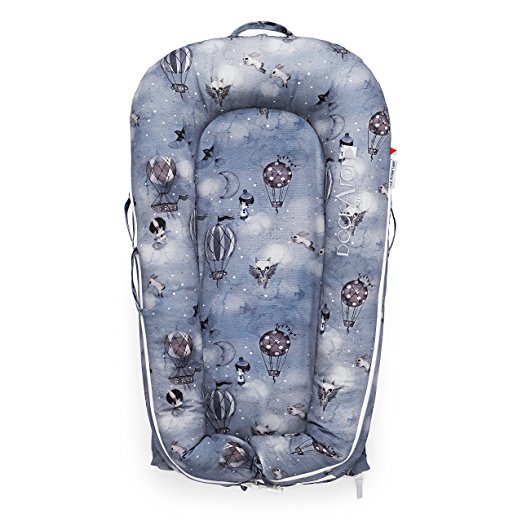
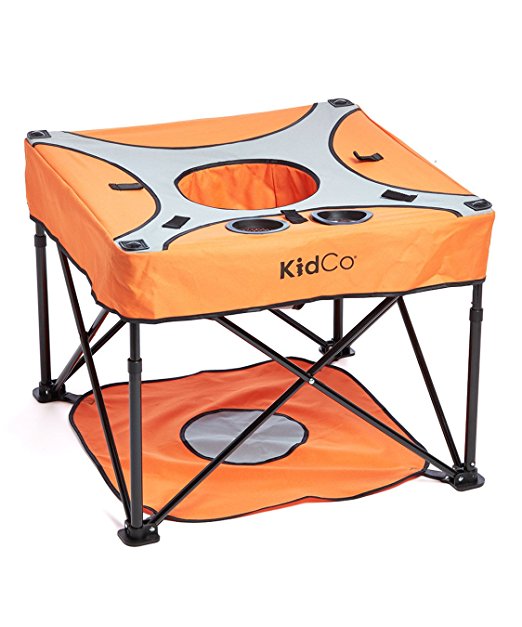
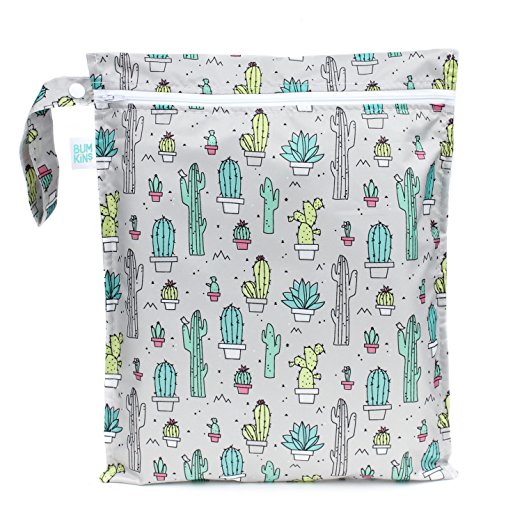
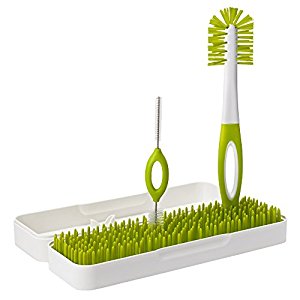
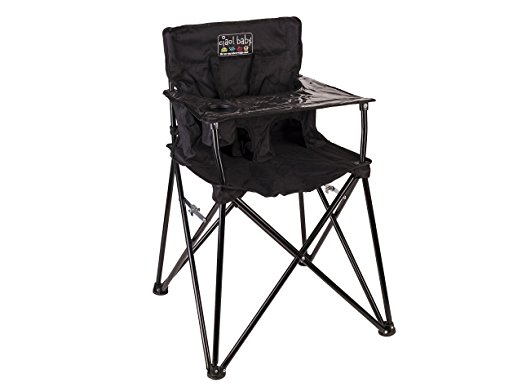
FOLLOW ROLE MODELS
My hubby and I stay inspired by following other travel-loving individuals, parents, and families. From the blogosphere to YouTube, there are so many amazing people out there sharing their travel stories! Here are a few accounts we have our eyes on right now!
Bloggers:
YouTubers
How do YOU roll?
I'd love to hear how you're making the most of travel with your little ones! Drop a comment below and share your favorite items, other travelers to follow online, or your own experience and advice!
Thanks for reading!
I'm Amanda: high school ELA teacher, passionate traveler, and mommy raising a bilingual baby. Read more about loving this crazy, beautiful adventure:
A Cell Phone Policy that Actually WORKS!
Every school and every teacher has a different philosophy with student cell phones, but with classroom management as a whole. Whether you are on the FORBIDDEN end of the spectrum or on the “do what you want, it’s your grade” end, I just might have a solution that will help in your classroom.
Every school and every teacher has a different philosophy with student cell phones and with classroom management as a whole. Whether you are on the FORBIDDEN end of the spectrum or on the “do what you want, it’s your grade” end, I just might have a solution that will help in your classroom. Setting clear expectations and routines around this policy during the first two weeks of school will take practice, but is critical to establish as it can easily be the number one classroom management problem you will face at the middle and high school level.
A Disclaimer
This post comes with a HUGE disclaimer: cell phone behavior is changing constantly and so is the way that teachers and administrators need to respond to this behavior. The suggestions in this blog post are tried and true, but that doesn’t mean that when you’re reading this, it might be something that’s not right for your situation. Officer Gomez, an SRO that speaks in-depth about discipline issues he faces in his position, argues strongly for full-banning practices in schools. The bullying, social-media addiction, and other unsafe exchanges that happen on cell phones need to be taken seriously - especially at the middle school level. School-wide policies that respect the best interest of student-learning and safety are the best situation, but for those of you facing a “handle it yourself” classroom situation, then I’m here to offer my story and my success.
The Cell Phone Charging Station
I’d first like to point out what I’ve named the policy - The Cell Phone Charging Station. It’s not “Phone Jail” or anything negatively connotated. The goal of using a charging station is to incentivize responsible behavior before punishment is even necessary. This is a lot like what I’ve learned to do as a parent. I know for a fact that my toddler’s mood between 4:30pm and 7:00pm is demonic…like unrecognizable, monster human status. Do I schedule playdates or haircuts during this time? HELL NO. I try to create situations that foster the kinds of outcomes that I desire long before I’m stuck handing out consequences, and this is critical for us in the classroom, too.
These are the kind of things that are so important when setting up your high school classroom: trust me, the Dollar Spot has its temptations, but if you don’t have FUNCTIONALITY in your classroom design, it won’t matter HOW sparkly that unicorn is. We must have a goal of creating a classroom environment that is safe, comfortable, and prime for academic success. Figuring that out needs to happen before anything else (and if you need help with that, I’m here for you).
Here’s what I tell the kiddos in the first week of school:
So here’s how cell phones work in our class: sometimes we need them to look something up quick, but most of the time, you know they’re a major distraction to your education. And that’s what you’re here for after all, right? Well, the bottom line here in this room is that I don’t want to see them out and being a distraction, but I also want you to learn how to control your own behaviors and be able to use them at appropriate times.
So here’s what we’re going to do: if you know that you can’t handle the distraction for the day, drop your phone off at the charging station. Plug it in, turn the ringer off, and just forget about it for the class period. You won’t even be tempted to look, plus, when class is over, you’ll probably be back to a full charge! For those of you who choose to take your chances and I have to ask you more than once to put your phones away, the second time I see the phone I’ll simply ask you to walk it over to the charging station since you couldn’t follow the first warning.
And that’s it. It’s that simple. From about day four, I had more students choosing to put their own phones at the station than I’ve ever had to reprimand. In the first semester of trying this system, I had one student (out of 125!) refuse to put his phone away and I was able to handle him separately.
A note: I’ve seen a lot of teachers have success with caddies in desk clusters, too.
The Benefits:
There will never be a perfect policy, but this approach certainly created a few things in my classroom:
An atmosphere of adult trust. Students are treated like adults with a choice, not children with rules (see class contract below)
An opportunity to self-assess and build self-monitoring skills. By putting the responsibility on them for knowing their own habits, I hope to be building a behavior that will strengthen over time and into their adulthood.
A community of caring. The tone of our room is one where we care about each other and care about learning - I don’t spend day after day nagging students about this annoying behavior!
Want to see my complete first two weeks of school plans? I’m here to walk you through step by step in my course:
The Setup:
Here’s what you’ll need to create your Cell Phone Charging Station:
A visible place at the front of the room. I have mine on the front board so that I can always see who is up there and keep an eye on any funny business.
A clear shoe hanger. I bought mine on Amazon for about $8.
A power strip that has USB ports. I bought mine on Amazon and this one has room for 14 devices to be plugged in at once. I never have this many at once, so it’s worked out great! Students do have to have their own cord in order to plug in - but most of them live with a plethora of cords in their backpacks so that hasn’t been a problem either.
A few dry erase markers. I ask the students to put their name on the pocket where their phones are so that there are no mix-ups or if they leave and forget the phone I know who it belongs to.
A sign or place on the whiteboard for you to write your rules for using the station.
I’d love to hear how this has helped in your classroom and how you tweaked it to fit your school. Establishing this as a routine in my classroom has become an essential part of the first two weeks of the school year. We need to practice this routine and actually test it in action a few times before we get it down. This is also a cornerstone component of the class contract that we sign together at the start of the year. I’d love to share a copy of the contract with you — feel free to adapt and change for your needs!
LINKS TO PRODUCTS
(some may be affiliate links which means I will be partially compensated for your purchase)
Six Ways to Create Warmth in your December Classroom (and still take care of business!)
There’s a lot more to teaching in the month of December than just cute holiday sentiments. This time of year is challenging for so many reasons; from the looming horror of final exams to the downright awful cold weather (remember, Chicago girl here!), December is a teaching challenge of focus, measuring learning from the entire semester, and finding ways to authentically remember the heart of the season in our classrooms.
This month, I've taken on the challenge to be part of the 12 Days of December Blog Hop and Giveaway! I teamed up with some incredible secondary teachers to write about "comfort and joy" during the holiday season in our classrooms.
When I think of “comfort and joy” in my classroom around December, what I look forward to most is getting my YouTube fireplace crackling on the screen at the front of my room!
This one comes with Christmas music:
And this one just crackles:
But as we all know, there’s a lot more to teaching in the month of December than just cute holiday sentiments. This time of year is challenging for so many reasons; from the looming horror of final exams to the downright awful cold weather (remember, Chicago girl here!), December is a teaching challenge of focus, measuring learning from the entire semester, and finding ways to authentically remember the heart of the season in our classrooms.
Here are SIX ways I tackle the challenges of this tricky teaching month (and keep things warm and cozy, too!):
1: Plan a White Elephant Holiday Party!
If you’re like me, you’ve been saying “no” to class parties all semester. This is the one time of year that I give in! We usually have an awkward calendar day right at the end of the semester, and so I seize this opportunity to let the kids have a party. And not just a sit around, eat, and stare at each other party...a White Elephant Party! By having a specific kind of gift exchange, it keeps the class moderately sane (students have to pay attention in order to play the game!) and keeps any socially awkward classes from getting too...socially awkward!
2: Fun, but meaningful, end of semester review for finals
You’ve covered so much material since August, and finals are right around the corner. As much as we’d like to just wrap things up and be done, students are going to be anxious about their final grades and getting prepared for their exams. In the English classroom, there are TONS of fun, warm, and joyful ways to do this! Consider:
Create Character Stockings: In this easy “craftivity”, students choose a character of significance from the semester and design a stocking that fully represents him or her. The stocking should include both textual evidence and symbolic imagery that encapsulates that character’s most important contributions to the work of literature. Have students give brief “presentations” of the stocking before you hang them up by the fireplace in your classroom. This will serve as both a review of important character moments and a speaking and listening grade before the end of the term!
Try a new techy review game that you haven’t had time to play this semester. Platforms like Kahoot!, Quizziz, and Quizlet Live are easy to use and energy boosters during the winter blues.
3: Thematic, argumentative writing
Some of you might not have finals until after winter break. This means that you have to fill all of December with meaningful, rigorous work to keep your kiddos from going bananas. Why not try out this mini-unit in argumentative writing? Pose the question: do the holidays make people more generous or greedy? Then, using the lesson plan, send students off to search through ten different articles and videos looking for evidence to support each side of the argument. After a few days of reading and notetaking, challenge the students to write an essay taking a side embedding and using the evidence they’ve found from the provided nonfiction resources. This could easily take you anywhere from two to six class periods and is sure to keep them both academically focused but also enjoying some humor and seasonally related discussions.
4: A Decor Update
This is a great time of year to warm up your room with a few simple decor ideas. Have you seen some of these before?
I LOVE these Winter Literary Device Posters from Ashley Bible of B’s Book Love. I have her nature-themed ones and love those too! These are the perfect wintery touch for any ELA teacher’s classroom.
Turn your classroom library full of books into a tree!
Make a classroom fireplace! Check out this tutorial from Little Running Teacher in the Philippines. It brightens and warms her classroom right up!
5: Service Learning Project and/or Field Trip
If you have some time to spare and need to fill it with something meaningful, this is a great time of year to start a service learning project or take a service learning field trip! I have a great way to get started on a project with Be the Change! Thinking about a field trip instead? How about taking your crew to Feed My Starving Children? This organization is perfectly set up for school trips, they spend time educating students about what they’re doing and why, and they make the volunteering time a blast!
6: Random Acts of Kindness Challenge
To really get into the spirit of joy and giving, why not challenge your students to complete this Random Acts of Kindness Challenge? Have students work together as a class and use a class hashtag to share photos on Twitter or Instagram completing each challenge. Take all of those pictures and throw them into an Animoto video to show at your White Elephant party! This free download is editable and ready for you completely customize for your own students and school.
Don't forget to check out all of the other amazing secondary bloggers sharing their ideas for creating comfort and joy in your classroom all winter long and be SURE that you enter our amazing giveaway! We are raffling off gift cards on December 1st, 4th, 8th, and 12th, so be sure to enter early and often to get your shot at some seriously crazy prizes!
Project Based Learning in the Secondary ELA Classroom
When teachers hear the term PBL (Project/Problem Based Learning), too many envision a science or math classroom. STEM focused courses are not the only courses where PBL is both important AND successful. Taking real world, authentic problems and putting them in the hands of students to investigate and solve belongs in EVERY discipline! Today, we'll take a look at how PBL can take shape in the English Language Arts classroom.
When teachers hear the term PBL (Project/Problem Based Learning), too many envision a science or math classroom. STEM focused courses are not the only courses where PBL is both important AND successful. Taking real world, authentic problems and putting them in the hands of students to investigate and solve belongs in EVERY discipline! Today, we'll take a look at how PBL can take shape in the English Language Arts classroom.
Project Based Learning: It All Starts with a Question
What makes PBL and ELA such a seamless fit is in one core principal: they're both inquiry driven. In our ELA classes, we're always asking students to ask questions and to dig to find the answers. The same notion goes for PBL. Once you find a place in your curriculum that you want student questions to drive the learning, you've found a place for a PBL assignment or unit.
Here are a few ideas to get started...
Fiction PBL
This type of project is fun, but there's not too many other teachers out there on the internet writing about it, so you'll have to bear with my example here as I don't have others to show you. When we think of a Fiction PBL, we are thinking about teaching a specific novel and making the problem in the novel something for students to extract and solve in real-life. So, for example, if you teach The Hunger Games, one of the core problems in the novel is the way the government creates and produces propaganda through media channels to maintain it's power and keep their citizens afraid and only informed with "approved" messages. To create something PBL, you would need to find the real-world connection. Immediately, I think about some of the Trump-era restrictions on media, the banning of certain media outlets during the campaign, and the circling accusations of "fake news". Here is an opportunity for a teacher to ask a driving question: to what extent is freedom of the press necessary? Students could investigate the history of the media, how media outlets and censorship function in other countries, etc. This would be a Fiction PBL opportunity.
Nonfiction PBL
A Nonfiction PBL would work very similarly to the Fiction PBL, but perhaps with a bit more flexibility. Teachers would select the nonfiction work and then design the PBL around that text. Teachers have done this with Carole Dweck's Mindset - can you imagine? Students researching and investigating about their own mindset? I've also seen it in classrooms using Malcom Gladwell books, Sean Covey's The Seven Habits of Highly Effective People, and more. You might even consider a memoir to start of a PBL experience. Other teachers have even used the structure of Lit Circles (small groups of students read different books) as a place to start a PBL experience for students.
Service Learning/Research PBL
Perhaps my favorite way of using PBL is to combine the Genius Hour idea of passion project into the PBL world by having students choose a social justice topic that they feel passionatley about and sending them off to do extensive research about the topic. At our school, the students first learn about the topic through research and reading two choice nonfiction books on the topic, they write a proposal and an annotated bibliography, they share what they're learned on social media, they go out into they community and find a way to give back to help their cause, and then finally, they present their findings at a huge community gathering at the end of the school year. I have this entire project for sale in my store if you're interested in checking it out!
In the meantime, you should definitley check out Kayla Delzer's TedTalk on Reimagining Classrooms! Her perspective is spot on!
For more ideas and training on implementing PBL in your English Language Arts classroom, enroll in Mud and Ink Teaching's online course and bring the power of PBL to your school.
EASY Grading with Macros in Google Docs
Macros are little shortcuts that you give to your computer. When you’re inside a Google doc, simply click “Tools” and then “Preferences”. Here, you’ll see the macros shortcuts that are already set up. For example, when you type ( C ) without spaces, your computer will automatically change it to the copyright symbol © . We want to make these shortcuts work for us as graders!
This is by far the least sexy title I’ve ever given to a blog post, but that’s exactly what I’m going to talk about: an unsexy name for a very efficient and amazing shortcut you can use while doing your online grading and commenting.
We’re going to skip a few steps here: I’m not going to address collecting work through Google Classroom (that post is for another day or someone else already wrote it) and I’m not going to address Doctopus of Goobric (but I will -- eventually!). We’re just going to assume right now that you have a class set of assignments on your Google Drive. You’re staring at them and thinking holy crap...this is so much work. I’m also going to assume you have a rubric ready to go. So let’s start grading.
What are MACROS?
Macros are little shortcuts that you give to your computer. When you’re inside a Google doc, simply click “Tools” and then “Preferences”. Here, you’ll see the macros shortcuts that are already set up. For example, when you type ( C ) without spaces, your computer will automatically change it to the copyright symbol © . We want to make these shortcuts work for us as graders!
What are the common errors?
Many teachers find that as they grade and as they comment they keep writing the same things over and over again. This is exactly what macros should help you do more quickly. If I’m grading an essay in English, the one biggest error I see at the beginning of the year is students giving shallow analysis of evidence they’ve included. So, instead of writing “After you use evidence, make sure the analysis is deep and explanatory. SHOW me how this evidence is relevant and important!”, I could just set up my macros to be “WA” (and I know that means “weak analysis”). Now, every time I type “WA” my computer will recognize that code and change my text to the full two sentence comment that I really wanted to make.
Getting started!
It’s really that simple! You’ll want to get started by making a list for yourself of the codes that you want to use and the text that they’ll be replaced with. Make this cheat sheet, then go and insert them in your preferences, and finally print out a copy for yourself. Eventually, after using it enough, you’ll memorize your codes, but for the beginning, you’ll want a cheat sheet to look off of.
Share in the comments below: what codes are you using for your subject area? What is working for you so far?
I'm Amanda: high school ELA teacher, passionate traveler, and mommy raising a bilingual baby. Read more about loving this crazy, beautiful adventure:
shop resources
Back to School: Tech Talk Week!
It's time to head back to school with The Secondary Series! We are so excited to share a whole entire week of broadcasting with you all. This Back to School: Tech Talk Week series will focus entirely on edtech tips and tricks for any secondary educator to bring back into his or her classroom.
It's time to head back to school with The Secondary Series! We are so excited to share a whole entire week of broadcasting with you all. This Back to School: Tech Talk Week series will focus entirely on edtech tips and tricks for any secondary educator to bring back into his or her classroom.
Why watch?
You mean, you need another reason other than exceptionally fun and free professional development? Well, we're offering out TWO TpT $50 gift cards to our viewers as well as printable certificates for professional development. Depending on your state and district, you may be able to use these certificates to redeem toward your certification (you'll have to ask your supervisor about this, but we'll hand over the proof that you were trained!).
Where do I go?
Join us in our Secondary Series Facebook group every night the week of July 30th - August 5th from 7:00pm - 7:30pm CST. We will broadcast there LIVE, but you can always catch the replays there in the group by clicking on the tab VIDEOS. Here's a look at the lineup:
Sunday July 30th:
7:00pm - Kick Off! Meet your Teacher-Broadcasters
Module 1 @ 7:20pm - 6 Ways to Use Snapchat in Your Classroom with Amanda C.
Monday July 31st:
Module 2 @ 7:00pm - Grading with Macros in Google Docs with Amanda C.
Module 3 @ 7:10pm - Make Using Multiple Sites Painless: One Tab with April C.
Module 4 @ 7:20pm - EdPuzzle with April C.
Tuesday August 1st:
Module 5 @ 7:00pm - Sli.do with April C.
Module 6 @ 7:10pm - Zip Grade with April C.
Module 7 @ 7:20pm - Prezi with Kim C.
Wednesday August 2nd:
Module 8 7:00pm - Autocrat with Tziri L
Module 9 @ 7:20pm - Google Suite/Classroom with Erin C.
Thursday August 3rd:
Module 10 @ 7:00pm - Canva with Meredith D.
Module 11 @ 7:10pm - Quizizz with Tziri L.
Module 12 @ 7:20pm - StoryBoardThat with Kim C.
Friday August 4th:
Module 13 @ 7:00pm - Legend with Kim J.
Module 14 @ 7:10pm - Spark Video with Kim J.
Saturday August 5th:
Module 15 @ 7:00pm - PowToon in the Classroom with Amanda W.
7:10pm - Gift Card Winner Announced!
Enter our TpT Gift Card Raffle and Qualify for Your PD Certificate!
For every broadcast that you attend, you'll be eligible to enter our raffle AND qualify for a PD certificate. All you need to do is tune in, listen for the EXIT TICKET question, and respond to the question here. The raffle will take place on August 5th 2017 (the last day of broadcasts), so entries after that date will not be eligible for the gift card. You may, however, continue to respond to exit ticket questions to qualify for your PD certificate up until September 5th. After September 5th, no more entries will be accepted.
6 Ways to Use Snapchat in the Classroom
I’m a teacher in my 30s, so I’m by no means a “Snapchat native”. I actually grew up with card catalogs, Dewey Decimals, and World Book Encyclopedias, so no excuses here teachers! You can learn ANYTHING! And before you write off Snapchat thinking social media does not belong in the classroom, try to see if there’s value here for your classroom, no matter how intimidating it might feel! Plus, you'll probably have a lot of fun along the way :-)
*If you need to know the basic ins and outs of Snapchat first, check out YouTube for some great tutorials for beginners! You do not need to be a Snapchat expert to use it in your classroom - most of your students already ARE experts! Let them teach YOU what you don’t know, and I’ll try to provide the rest here in this post!
I’m a teacher in my 30s, so I’m by no means a “Snapchat native”. I actually grew up with card catalogs, Dewey Decimals, and World Book Encyclopedias, so no excuses here teachers! You can learn ANYTHING! And before you write off Snapchat thinking social media does not belong in the classroom, try to see if there’s value here for your classroom, no matter how intimidating it might feel! Plus, you'll probably have a lot of fun along the way :-)
Why Snapchat?
Before we get too far into this post and tutorial, I want to be very clear that there are good times and bad times to use social media in the classroom, so use these tips at your own discretion. Snapchat hasn’t replaced any part of my classroom, but it sure has enhanced lessons and homework assignments!
How do you use Snapchat in the classroom?
Snapchat is mostly known for its social aspects, but that’s actually not how I use it most often. What I like about Snapchat is the ability to adapt, modify, and play with images. Essentially, Snapchat allows you to pull up an image (or take a picture), then annotate that picture with stickers, highlighting, doodles, and text. There are other apps that do this, too, so if you’re not comfortable with Snapchat, let me know in the comments and I can make other suggestions. You can also do most of these activities using Google drawings if your students have Chromebooks and you’d prefer not to use Snapchat. I use Snapchat because my beginning of the year survey tells me that about 98% of my students are on it actively!
The basic steps to use Snapchat in the list below follow this pattern:
Decide on an image or picture that you want students to work with. This could be a picture of a page in a book, a selfie (reaction to learning), a picture of a student handout, etc.
Either YOU provide the picture for students to download (you can post the picture on Classroom and students can save it to their phones) or direct the students to take a picture of something (a math problem in their text book).
Open the Snapchat app and select that image from the camera roll.
Now, students can annotate the image however you want them to (highlight, sticker, text, underline, etc.)
Finally, students save the image to their camera roll (no need for them to share it socially on their stories) and then submit that image to you in a variety of different ways.
Are you starting to see the vision? Let’s get started! Here are the 6 ways to use it in the classroom!
Download a FREE Checklist of these 6 Tips!
1. #BookSnaps
This was actually my first introduction to using Snapchat in the classroom. My great friend Tziri Lamm shared about #BookSnaps in a Facebook group and I knew I just had to try them! Think of #BookSnaps as a new and updated way of assigning annotation for homework. Students in ANY subject can take a picture of their reading, react to it, and submit that annotation back to you easily and with a lot more engagement than standard annotating practices. Check out creator Tara Martin’s website about how students across the world are reading, snapping, annotating, learning, AND sharing socially!
2. Book Talks
Similar to BookSnaps, Snapchat also allows users to record ten second videos. Give students your criteria (why you chose the book, the best part, your favorite character, your rating/recommendation), and have them record a ten second video for each of the criteria. Students could record themselves or possibly parts of the book or any other setting that appropriately matches what they’re talking about. To turn in, students would save each video to their camera roll and then you could either teach them how to edit the four smaller videos together OR for a really low-tech option, have the students insert the videos into a Google slide. When you hit present, you’ll be able to watch each video! If you’re a librarian, you might have everyone in a class do a ten second book talk and then compile them all together for a 260 second video (depending on how many students, obviously!) of all the books read by an entire class (Check out Nikki D Robinson’s website for ideas)! There are lots of options and they’re all pretty low-tech!
3. Writing Stories
This idea is similar to Book Talks. If you’re not a reading teacher (or someone who would be having students do Book Talks), students could easily emulate the same process as described above, but with a different topic. Maybe you want students to explain a process in math or science or even demonstrate a physical skill in PE - whatever the case may be, students could make quick ten second videos and then either stitch them together in video editing software or submit via a Google slide. It’s engaging for them, requires mastery (for the most part), and is easy to collect and grade. That’s a win!
4. Raise Awareness
In my class, we do a massive service learning project called Challenge to Change. One of the things students need to do as part of their giving back to the community is to raise awareness and educate others about their social justice issue. Using Snapchat, students were able to create and build stories to share socially and raise awareness amongst their peers on topics ranging from homelessness to bullying. Using Snapchat, students could also track their engagement with their audience by reporting back how many VIEWS their story got. If their story wasn’t viewed as many times as they set a goal for, this could encourage a conversation about the QUALITY of the story and prompt revision. Yes, I know, win, win, WIN!!
5. Vocabulary Practice
Every high school teacher has a responsibility to explicitly teach vocabulary. Yep, I said it. Every single one of us. Every content area has a specialized vocabulary that desperately needs to be taught to our students, so why not do it with Snapchat? Students could take a picture of a “scene” or moment that depicts one of their vocabulary words. Students could take pictures of seeing the word used authentically in the world OR a video of some friends using it in a conversation. Combine all of the snaps from your class into a Google Slideshow and distribute to everyone for studying purposes.
6. Revision
One of the most important things I’ve been learning as a veteran teacher is finding more and more ways for learning to continue. One of these important classroom habits is that of revision. I try to instill in my students the value of learning and that it never ends: just because you’ve been tested or written a paper, that doesn’t mean you’re done learning. We make learning cyclical and important to revisit using revision. Using Snapchat, we’ve had students:
Take a picture of their grammar error, mark it with the “pen” function, then write the correction in the text box and submit
Take a picture of their old quiz, then type their revised answer in the text box and submit
During peer review, students will “snap” pics of their favorite lines or moments in a partner’s paper. We share the highlights with one another as we look for ways to improve.
For reflection, students take a picture of a moment they’re proud of and comment about why they felt successful in that moment (in an essay or on a test)
While it sounds like taking pictures of exams and essays would encourage cheating or copying, we’ve had the opposite experience. We’ve seen that most students (there are always a few that push the limits!) value the authentic feedback experience that comes with using Snapchat and their revisions.
Getting Started!
Start small. Teach yourself Snapchat (its really not hard!) and play around. Maybe make an account and share it only with a trusted friend so you can try it out and make mistakes. Then, choose one simple tool and give it a shot. Lay the groundwork for your expected behaviors (just like with all other technology) and try one thing. If it doesn’t work for you right away, that’s okay! Trying new things is what makes us all #adventuousteachers and that’s an attitude and mindset that students and colleagues respect.
If you find a technique and are feeling really successful, be sure to snap a picture and post it on Instagram using #edtechteacher! Every month, the #edtechteacher crew gives away $100 to a teacher using technology in innovative ways in his or her classroom - let’s see what you’re up to!
Secrets of an English Teacher: I Don't Have a Classroom Library
It’s true. I confess: I am a high school English teacher and I do not have an operational classroom library. Do I have a classroom full of books and do I grab whatever I can at Goodwill and garage sales? Heck yes. But do I have a check out system, or even an organized system in which I’ve read every book on the shelf and make a point to recommend titles to each of my 125 students every other week? Nope. I don’t.
It’s true.
I confess: I am a high school English teacher and I do not have an operational classroom library. Even more scandalous? I don't think that giving students choice reading is the most important part of my curriculum (gasp!).
Do I have a classroom full of books and do I grab whatever I can at Goodwill and garage sales? Heck yes. But do I have a check out system, or even an organized system in which I’ve read every book on the shelf and make a point to recommend titles to each of my 125 students every other week? Nope. I don’t.
And I certainly don’t think it’s wrong to have these things, but after posting my confession in a Facebook thread last night, I faced and read quite a bit of retaliation to the notion that my high school English classroom is not equipped with a library. A few thoughts:
We have a fantastic school library and librarian.
So this conversation would be pretty different if this wasn’t the case. Our librarian is a voracious reader and is constantly fighting for funding and purchasing new books (even ebooks and audiobooks!) for our school. She sponsors our school’s book club. She comes into anyone’s classroom for a book talk ANYTIME THEY WANT. She will sit with individual students to get to know them and recommend the right book. English teachers have a lot of things to do and to provide for their students: with these resources just one floor beneath my classroom, I’ve learned to let the experts be the experts (in YA literature, specifically).
I can’t stand most YA literature.
For myself or for my students. Seriously! The idea that the English teacher should be constantly reading YA literature to purchase for the classroom library and then recommend to high school students is preposterous to me. If YA lit is the developmentally appropriate choice for a particular student, I consult with my incredible librarian (see above), with Goodreads, YouTube, and even social media. Rather than me reading dozens of YA books, I try to teach the students how to find books that will best suit them. I show them these sites, introduce them to the right people, and have them talk to each other. What I spend my time reading and recommending to students are things that will challenge them: I send students to documentaries on Netflix and YouTube, I help them download free podcasts on iTunes, I print off articles from The Atlantic and sometimes even The New Yorker. I find texts (not just novels) that a kid would never have found on his or her own. By the time students have reached my classroom, they are 15 and 16 years old. For many of them, YA literature is a bridge that leads backward: protagonists tend to be just a little too young and the writing just a little too easy. While I would never tell a student not to read a YA book, I’m just not putting it at the top of MY huge teacher to-do-list. Students will find great YA books, but I don’t think they’ll find a Malcom Gladwell podcast just by chance.
A literacy-rich environment ≠ a classroom library.
It seems like this was thrown around a lot in defense of teachers having individual libraries: “Students need a literacy-rich environment!”. Absolutely! But that goes way beyond a collection of books on a bookshelf! That means poetry and word walls, inspirational authors photos and maps of the world. “Print-rich” and “literacy-rich” are completely achievable even if a teacher chooses not to maintain a classroom library or “reading-nook”, at least at the high school level.
Choice reading is not a priority in my classroom.
I know: another mortal sin confessed by an English teacher. Trust me, I’ve read tons about choice. I love Gallagher and Atwell and the other experts out there, but after years of experience in my school with my 10th graders, I’ve decided that year-long independent reading is not what’s most important in my classroom. Our focus is on an inquiry-driven, well-rounded language arts experience. Each of our units is shaped by an essential question and then within the unit, texts are selected (some by the teachers, some by the students) to help students enter into discussion of this question based on their reading experiences. During the year, we do whole-class novels (see below for more on that!), a debate unit (reading lots of research), poetry, literature circles, a service learning project, Shakespeare and independent reading. Choice reading drives two of these units (the lit circles and our service learning project), but our school year is anchored by common experiences and a curriculum written by the teachers. For me and my team, we are constantly weighing the needs of our students and the urgency of college being only two years away. College reading is not choice reading and it’s certainly not always interesting. If students are only reading high-interest novels or the novels that they want to read, how are they going to handle their first college packet of articles? Probably like this:
Panic
A trip to Walgreens to buy more highlighters
Skimming
Panic
Reading the bold titles
A first attempt
Frustration
Quitting
If a student's entire literature experience is driven by choice and personal preference, I’m not sure we’re raising the kind of generation that will succeed in problem-solving or critical thinking. Choice should certainly be used as motivation and as a way of supporting struggling readers, but the average high school sophomore (in my experience) needs more than choice and independent reading time.
I still believe in the whole-class novel.
Passionately. But I understand that when you hear whole-class novel, you’re probably picturing what your own experience was in high school: reading quizzes, lists of discussion questions, annotating homework, and a chapter by chapter pacing calendar. That’s not what it looks like in most high school classrooms anymore! Let me take you through the first unit of my school year:
Unit 1: To What Extent is America a Dystopia?
Each of our units is framed by an essential question and since we wanted to focus the beginning of the year on dystopia, we crafted this question. An essential question gives the curriculum a frame and a lens for the students to work from. While the students didn’t “choose” the question, we, the teaching team wrote the question and chose the genre because of its popularity in YA fiction, in film, and in its eerie and disturbing current events connections. From this question, we then select the texts. These shift and get updated every year, but this year in a 9-week unit, students will read/watch/hear:
“Harrison Bergeron” by Kurt Vonnegut
“The Ones Who Walk Away from Omelas” by Ursula K. LeGuin
“The Pedestrian” by Ray Bradbury
“There Will Come Soft Rains” by Ray Bradbury
“The Lottery” by Shirley Jackson
“The Semplica-Girl Diaries” by George Saunders (published in The New Yorker October 15, 2012 issue)
Fahrenheit 451 by Ray Bradbury
Limetown (a radio-drama via Two-Up Productions)
Video (extended clips) from Wall-E, Elysium, The Hunger Games, and “Sight”
If you’re familiar with even just a few texts on this list, you’ll recognize how amazingly rich AND high interest this reading list is! Also, this list doesn’t include any of the current event news articles that we will pull as the unit is actually happening - I’m pretty positive there will be some engaging stories about North Korea, President Trump, Russia, and other dystopian-esque realities on the horizon for the fall of 2017. So, no, we won’t be choosing what we read, but on this list is a text and an opportunity for readers at all different levels. Fahrenheit 451 is the core text of the unit, but as you can see, students will have the opportunity to learn about our essential question from a huge variety of angles. Assessments for the unit include a socratic seminar, a synthesis essay, and a sprinkling of odd-one-out quizzes. Variety, intensity, depth, and critical thinking how we want our curriculum to be shaped so that students at all levels feel challenged and come to understand their own worlds in a brand new light. If you’re interested in further reading, Kristin Bowers elegantly defends whole-class novels in her blog post: In defense of the whole-class novel as does teacher-author Tracee Orman in her post Defending the Whole-Class Novel.
Caring, passionate, and professional teaching is what counts.
No matter your stance on choice reading vs whole-class novel reading, or any other education debate for that matter, the most important thing I keep hearing all around Facebook are the voices of educators who genuinely care not only about their students, but about their own professional development. Strong opinions about reading means that we have established a vibrant community of teachers that are talking and listening to one another and reading about our profession. This, above all, is what I’m most proud of in the online teacher community. But we must be careful to not be martyrs and to not qualify what "good" or "bad" teachers are based on the contents of their physical classroom space.
After ten years of teaching my population at my school, I can only offer a perspective from my experiences. What I’ve come to stand by is a goal to continually provide opportunities for students to be in conversation about what they are reading and what they are thinking. Yes, I would love for my students to be life-long readers and devour book after book, but realistically and more importantly I want them to be life-long thinkers. Critical thinkers. Critical voters. Through inquiry-based units, a wide variety of challenging texts, I’ve seen great success - it hasn't been a necessity for me to maintain a full-on classroom library to create powerful and important reading experiences for students, and for the new teachers out there who are seeing this all over Pinterest and Instagram, it can be pretty daunting. For teachers reading YA books all summer long and performing the role of teacher and librarian at your schools (so many of which I know don’t have the resources we do), my hat is off to you. Keep doing what you’re doing - I admire you! And for those of you out there feeling like failures for not having a classroom library or a huge stash of books to share with kiddos, worry not. Grab your favorites from home, maybe take one trip to Goodwill, and feel good about a small collection in your room somewhere. There are so many ways to challenge and connect with kids over literature. Keep researching, keep talking, and keep loving what you do. Our kids need every single one of you.
If you are looking for resources to help you teach a dystopian literature unit, you might like An Introduction to Dystopia:
If you want to learn more about Essential Question based curriculum design, check out Teach Box:
Go Back to School with Mud and Ink Teaching: Live Events, Giveaways and MORE!
Are you ready for Back to School season?!
It's already here, so if you're feeling overwhelmed and underprepared, focus on what's most important - professional development and thinking about curriculum. Here's what Mud and Ink has for YOU this August!
July 30 - August 5: Tech Talk Week
The teachers of The Secondary Series are so excited to bring you a week of shows all dedicated to technology in the classroom. From July 30 - August 5th, tune in from 7:00pm CST - 7:30pm CST for one whole week of great content! Our shows will resemble a TedTalk - quick, focused tutorials and idea-focused solutions for you to take into your classroom right away. We're going to have SO MUCH FUN (obviously) chatting with you LIVE! During the week, we will be offering certificates for PD credit (tune in for more info on that) and chances to enter our giveaway of $100 to Teachers Pay Teachers! The first live show starts Sunday June 30th at 7pm CST!
Join our Secondary Series group on Facebook to have access to shows
Respond to our Event for reminders and updates
Check out our Calendar for more detailed information
Adventurous Teaching Academy: GRAND OPENING!
As I've been working with teachers over the last ten years, I've started to notice that like-minded teachers not only like to be together in community, but inspire one another and encourage one another to be more and more courageous in their teaching every single day. So, this summer, I've developed the Adventurous Teaching Academy: a place for teachers who like to be challenged and want to try new things in their classrooms can come together, take courses online, make new friends, and find inspiration to keep moving forward as an #adventurousteacher. Sadly, many teachers are so burnt out already they're just looking to copy a worksheet. But I know that's not you. You are an #adventurousteacher, and I invite you to find out exactly how special that is and how we're going to make a huge difference in the lives of all our students this year.
August 1st - 15th: ELA LIVE!
Another group of incredibly hard working teachers have been collaborating all summer long on another live series for you - this time, each and every show is content focused for ELA teachers! Join broadcasters each night as they share their ELA expertise on Facebook Live from their individual channels. For a sneak peek at the lineup, check below! I'm excited to kick things off on August 1st sharing all about Project Based Learning in the ELA Classroom.
How to Work with Words Without a Workbook
In order for our students to succeed across subject areas, we must all acknowledge the critical importance of vocabulary instruction. There are so many best practices out there, so many specialists, and so many approaches, it can feel daunting to choose a streamlined and effective strategy for your classroom. No matter your favorite method or style, I have a thoughtful yet efficient strategy for you to try in your class this year.
How to Teach Vocabulary Effectively and Efficiently at the High School Level
In order for our students to succeed across subject areas, we must all acknowledge the critical importance of vocabulary instruction. There are so many best practices out there, so many specialists, and so many approaches, it can feel daunting to choose a streamlined and effective strategy for your classroom. No matter your favorite method or style, I have a thoughtful yet efficient strategy for you to try in your class this year.
Let’s start with the routine: bell work. Most high school teachers have seen the merits of implementing bell work and I’d argue that this is the best and most consistent way to have daily vocabulary practice without having to give up tons of class time. When the bell rings, you need something that students can do independently, quietly, and quickly. Why not have them try using the Vocabulary Digital Interactive Notebook?
Here’s how it works: you provide students with your list of words at the beginning of the unit. Then, daily, students take out their 1:1 devices (should be Google-ready), open their Vocabulary Digital Interactive Notebooks, they choose a vocabulary activity (there are eight of ‘em pre-loaded), they work on the selected activity for 4-5 minutes, and then you’re ready to move on with the rest of class!
Here’s how to get started:
1. Create your Vocabulary Units
The first thing you’ll need to do is decide on your word lists. Some of you may already have pre-selected words for your units, and others of you might have more flexibility, but either way, you are the one responsible for deciding on the words and the length of each unit. When you’ve got your word lists ready to go, we can introduce the Vocabulary Digital Interactive Notebook!
2. Train Students on the Routine
To use this notebook effectively, students should be trained on the bell work routine that you have determined to be the most efficient. In my room, that means when the bell rings, students are in their seats with Chromebooks open. At the front of the room, I display (from my computer) whatever specific directions I have for the day and the students know to check there and then begin. They open up their Vocabulary Digital Interactive Notebooks, follow the directions, and in 4-6 minutes, they’re done with that day’s vocabulary practice.
3. Model and Practice Each Activity (and add your own!)
Inside the notebook, you’ll find eight different practice activities for students to use with one or multiple words from the word list. At the beginning of the year (or when you implement this activity) it’s critical that you model and practice each of the graphic organizers and activities in the notebook. Oftentimes, during Unit 1, teachers spend time teaching each of the activities one by one before making the bell ringers and independent activity in Unit 2. Don’t forget: since this notebook is completely editable, you can add any of your other favorite quick vocabulary activities that you want before you assign it to the students!
4. Add Your Own Assessments
Vocabulary study requires all different kinds of assessments, and this particular post and product don’t provide this part. Make sure that you and your team decide on appropriate formative and summative assessments to use along the way.
5. Keep it Fresh
There are lots of ways to keep this activity fresh throughout the year. Here are just a few things teachers have tried:
Pick a few days a week to have students work with a partner. This gives students a chance to talk about the words and word meanings rather than always working solo. Marzano (and other vocabulary experts) have made it abundantly clear that students need multiple exposures to words in order to fully learn them. Partner and small group work make this possible!
In a given week, divide the list into parts. Ask students to focus on the same 3-4 words ONLY but go through every activity. This ensures mastery of the words, not just practice. The next week, students could rotate to the next grouping of words.
If you’re assigning this notebook through Google Classroom, you will automatically have access in your Drive to each student’s notebook. Occasionally, project a few notebooks from students that have done exemplary work. This ensures students know what quality looks like and helps them to not get lazy with the routine. You can also print out notable work directly from their Google slideshows!
Ready to get started? Then what are you waiting for! Pick up your own digital, edible copy of the Vocabulary Digital Interactive Notebook today!

